The horror genre has long been a staple in the cinematic universe. From spine-chilling narratives to terrifying characters, horror movies have a unique ability to leave us on the edge of our seats. Yet, it’s not just the scary plots or eerie sound effects that make these movies so captivating. A significant part of their charm lies in their distinct visual aesthetics.
In the world of horror cinema, visual aesthetics play an instrumental role in crafting the overall atmosphere and feel of the film. It is through these aesthetics that filmmakers can create an environment that visually transmits fear, suspense, and sometimes, even a strange beauty.
Think about it. From the use of shadow and light to carefully curated color schemes, from unsettling camera angles to the calculated use of space and scenery, each of these visual elements contributes to a movie’s spine-tingling aura. The clever integration of these aesthetics allows filmmakers to take us on a journey that goes beyond the narrative, immersing us in an environment that keeps our hearts racing and our eyes glued to the screen.
It’s this rich visual tapestry that adds depth to the movie’s narrative and characters. Whether it’s an eerie haunted house, a foggy forest, or a dimly lit corridor, the visual aesthetics set the stage for the unfolding horror, enhancing the suspense and making the audience’s encounter with the macabre more palpable.
Moreover, the visual aesthetics of horror movies also influence the way we perceive and remember the film. They leave us with haunting images that linger in our minds long after the movie has ended, further cementing the film’s impact.
So, if you’re a horror movie enthusiast or simply someone who appreciates the art of visual storytelling, diving into the visual aesthetics of horror movies can be an exciting adventure. It’s an opportunity to appreciate the thought and creativity that goes into crafting these thrilling cinematic experiences. And who knows? You might just come out of it with a renewed admiration for the eerie charm of horror cinema.
#1 Suspiria (1977, and also its 2018 remake)
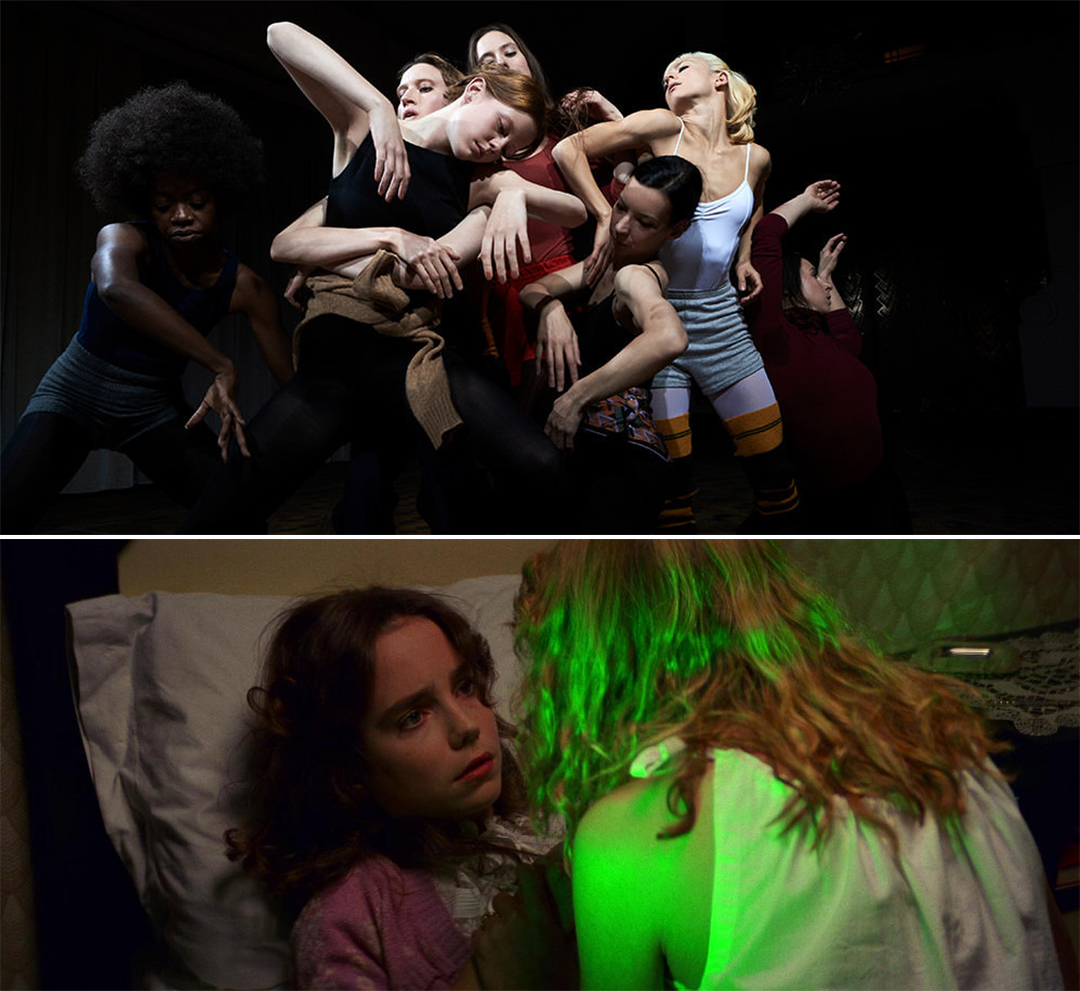
"Suspiria" (1977) is an Italian horror film directed by Dario Argento that is often described as a sensory experience. Its aesthetic is a blend of surreal technicolor imagery and gothic set designs. The film uses vibrant and contrasting primary colors like red, blue, and green to heighten its unnerving atmosphere. The story revolves around an American ballet dancer who joins a dance academy in Germany, only to discover it's a front for something far more sinister.
"Suspiria" (2018), Luca Guadagnino's remake, carries a different yet equally distinctive aesthetic. While the original used saturated colors, the remake leans into muted earth tones, complemented by stark, modernist architecture. The new Suspiria is colder, with the tension rising from the uncanny eeriness of the dance academy and its inhabitants. The plot is similar to the original, but with a deeper exploration of post-war guilt and female empowerment.
#2 Midsommar (2019)
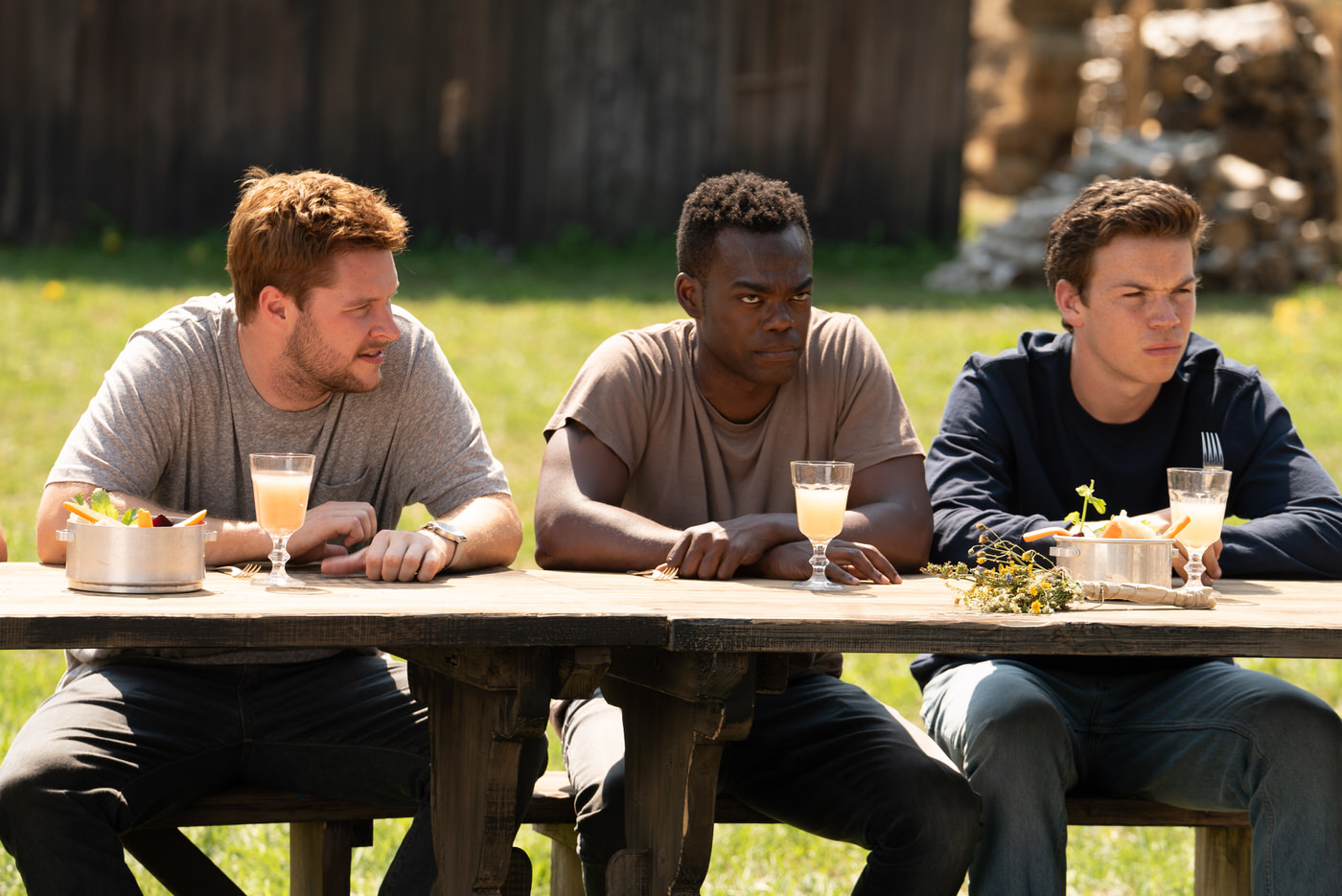
"Midsommar" (2019) is a horror film directed by Ari Aster that eschews the typical dark and gloomy aesthetic of the genre for a bright and sun-drenched atmosphere. Set in the picturesque landscapes of rural Sweden, the movie boasts wide shots of lush greenery and vibrant wildflowers, providing a stark contrast to the dark elements of the plot. The film's design emphasizes white clothing and traditional Swedish folklore, which adds an eerie beauty and ritualistic importance to the narrative.
The story follows Dani, a young woman who, following a family tragedy, accompanies her boyfriend and his friends to a once-in-a-lifetime midsummer festival in a remote Swedish village. As the seemingly idyllic retreat quickly devolves into an increasingly violent and bizarre competition at the hands of a pagan cult, the film's striking visuals serve to intensify the horrifying realization of the characters' predicament. The contrast between the events unfolding and the sunny, open setting creates a unique, disorienting horror aesthetic.
#3 The Shining (1980)
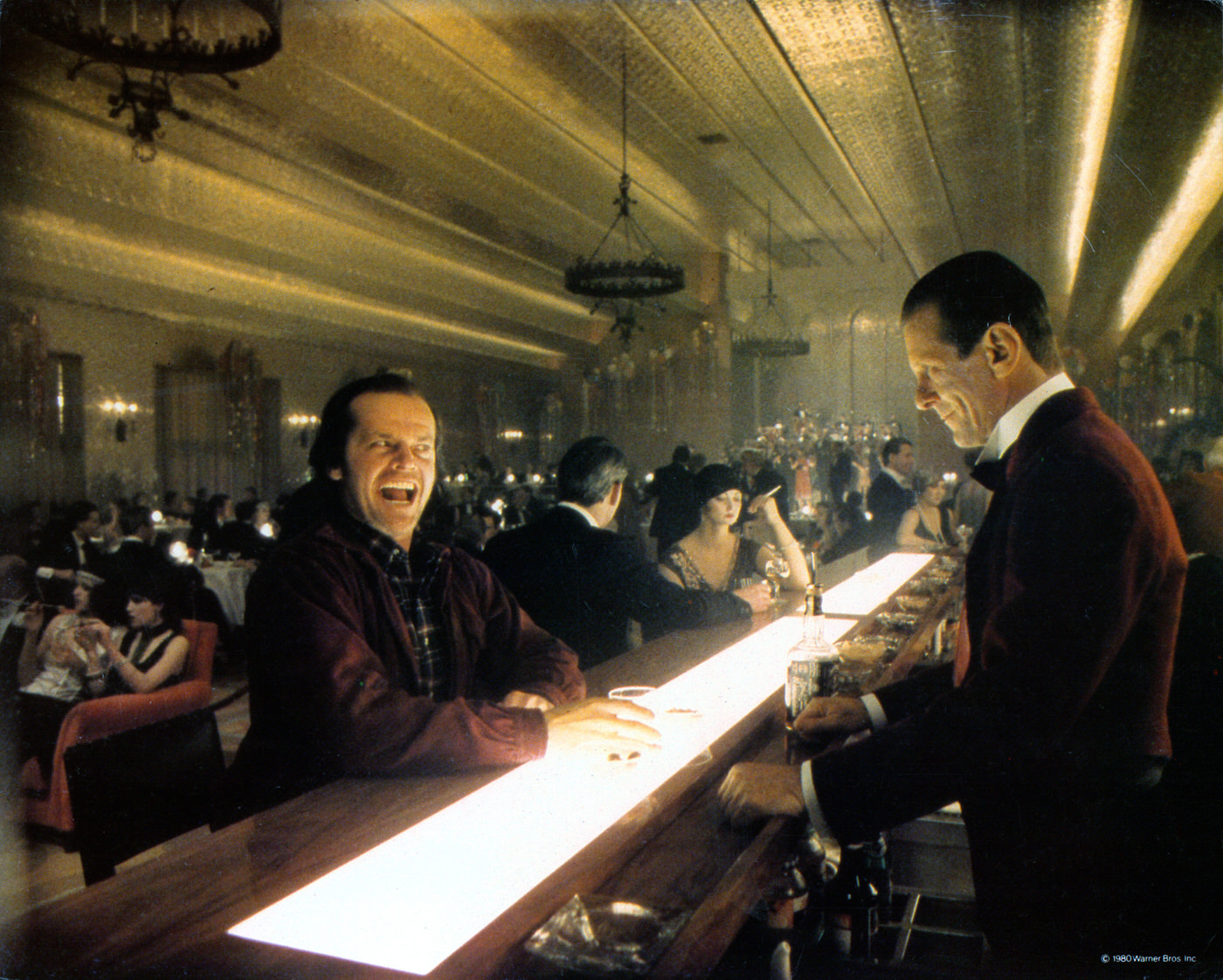
"The Shining" (1980), directed by Stanley Kubrick, is a masterclass in visual storytelling, boasting a unique aesthetic that contributes significantly to its enduring horror. Set in the isolated Overlook Hotel, its design features symmetrical shots, one-point perspectives, and long tracking shots to build a sense of unease and impending doom. The hotel's sprawling, labyrinthine interior, the iconic geometric carpet patterns, and the stark, snowy exterior landscapes are key elements of the film's hauntingly beautiful aesthetic.
The film tells the story of Jack Torrance, a writer who takes a job as a winter caretaker for the remote hotel. He brings along his wife and son, the latter possessing psychic abilities. As Jack succumbs to the hotel's evil influence and descends into madness, the visually arresting imagery intensifies the horror and the sense of claustrophobia. The aesthetics of "The Shining" make it not just a horror movie, but a piece of art that stands the test of time.
#4 Hereditary (2018)
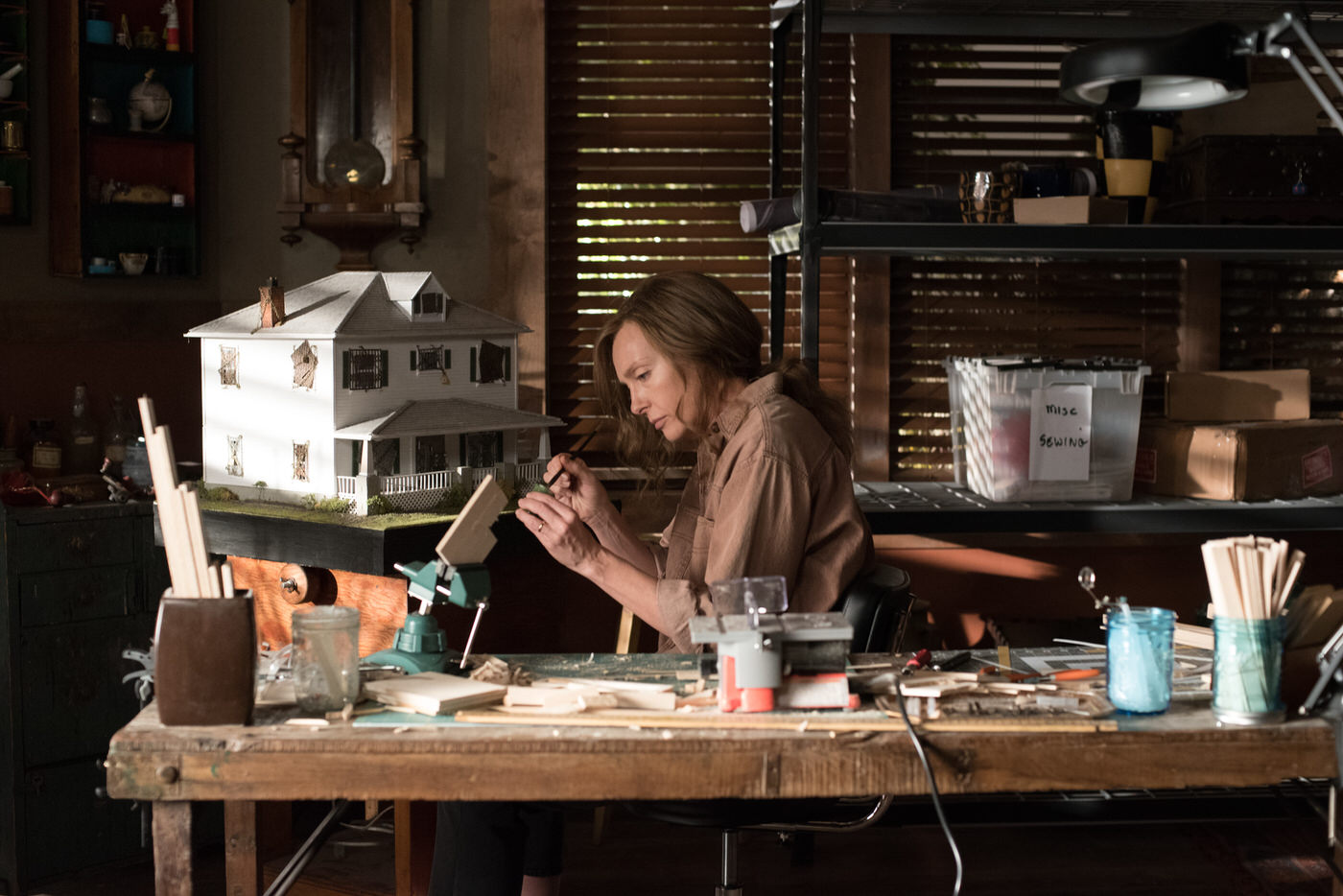
"Hereditary" (2018), directed by Ari Aster, combines deeply unsettling narrative elements with a visually distinctive aesthetic to create a modern horror masterpiece. The film uses meticulously composed shots, dark and brooding lighting, and unsettlingly symmetrical framing to build an oppressive atmosphere of dread. The highly detailed miniatures created by the film's central character, Annie, serve as an aesthetic motif throughout the film, blurring the lines between reality and artifice, and adding another layer of visual complexity and metaphorical depth.
The story revolves around Annie and her family as they navigate grief following the death of their secretive matriarch. As they begin to unravel cryptic and increasingly terrifying secrets about their ancestry, the family is plagued by a host of disturbing occurrences. What starts as a family drama morphs into an intense horror story, with the film's aesthetic choices heightening the unnerving exploration of destiny, mental illness, and inherited trauma.
#5 The Witch (2015)
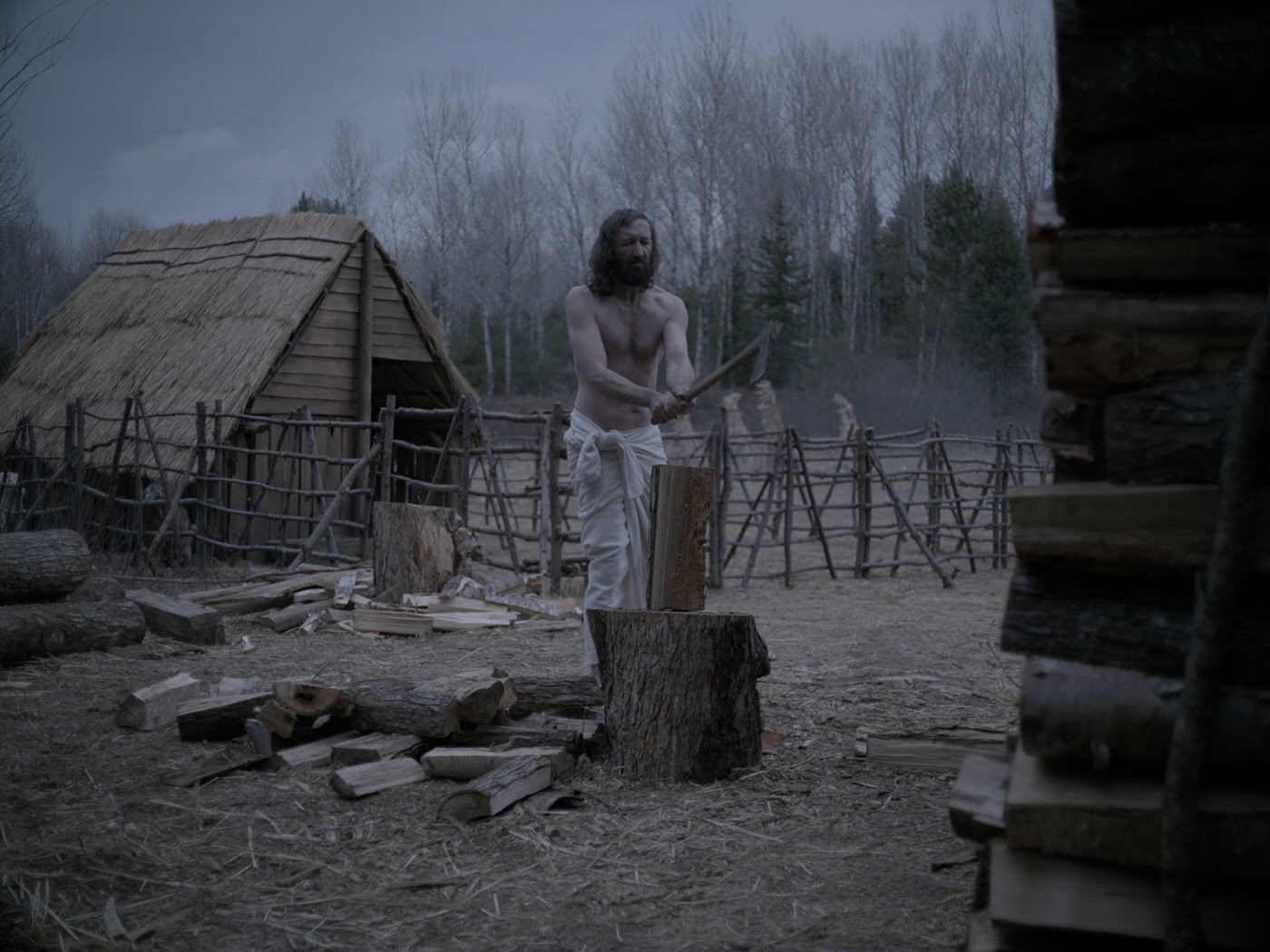
"The Witch" (2015), directed by Robert Eggers, stands out for its atmospheric, painstakingly recreated 17th-century New England setting. The film's aesthetic is deeply rooted in naturalistic lighting and period-accurate production design, with a muted color palette that intensifies the sense of bleakness and isolation. The film's visuals, from the dense, forbidding woods to the harsh, spartan life of the family's farmstead, evoke a palpable sense of dread and impending doom.
The story follows a Puritan family banished from their community over religious disputes. They build a new life on the edge of a remote forest, but when their newborn son vanishes, and their crops fail, they are forced to confront the horrifying possibility that witchcraft may be at play. The film's historical authenticity and stark visual aesthetic work together to create a slow-burning horror movie that stays with you long after it ends.
#6 Pan’s Labyrinth (2006)

Pan's Labyrinth" (2006), directed by Guillermo del Toro, is a dark fantasy horror film noted for its enchanting and hauntingly beautiful aesthetic. Del Toro's meticulous attention to detail is evident in every frame, from the intricate set designs and costumes to the evocative use of color to differentiate the real world from the fantasy underworld. The fantastical elements are disturbing yet mesmerizing, populated with imaginative creatures that blur the line between beauty and horror.
Set in post-Civil War Spain, the story follows young Ofelia who, along with her pregnant mother, moves to the countryside to live with her authoritarian stepfather. Drawn to an ancient labyrinth near their home, Ofelia meets a mythical faun who tells her she is a lost princess and must complete three tasks to reclaim her immortality. While the real world is fraught with war and cruelty, the labyrinth world, despite its dangers, provides a form of escapism.
#7 Crimson Peak (2015)
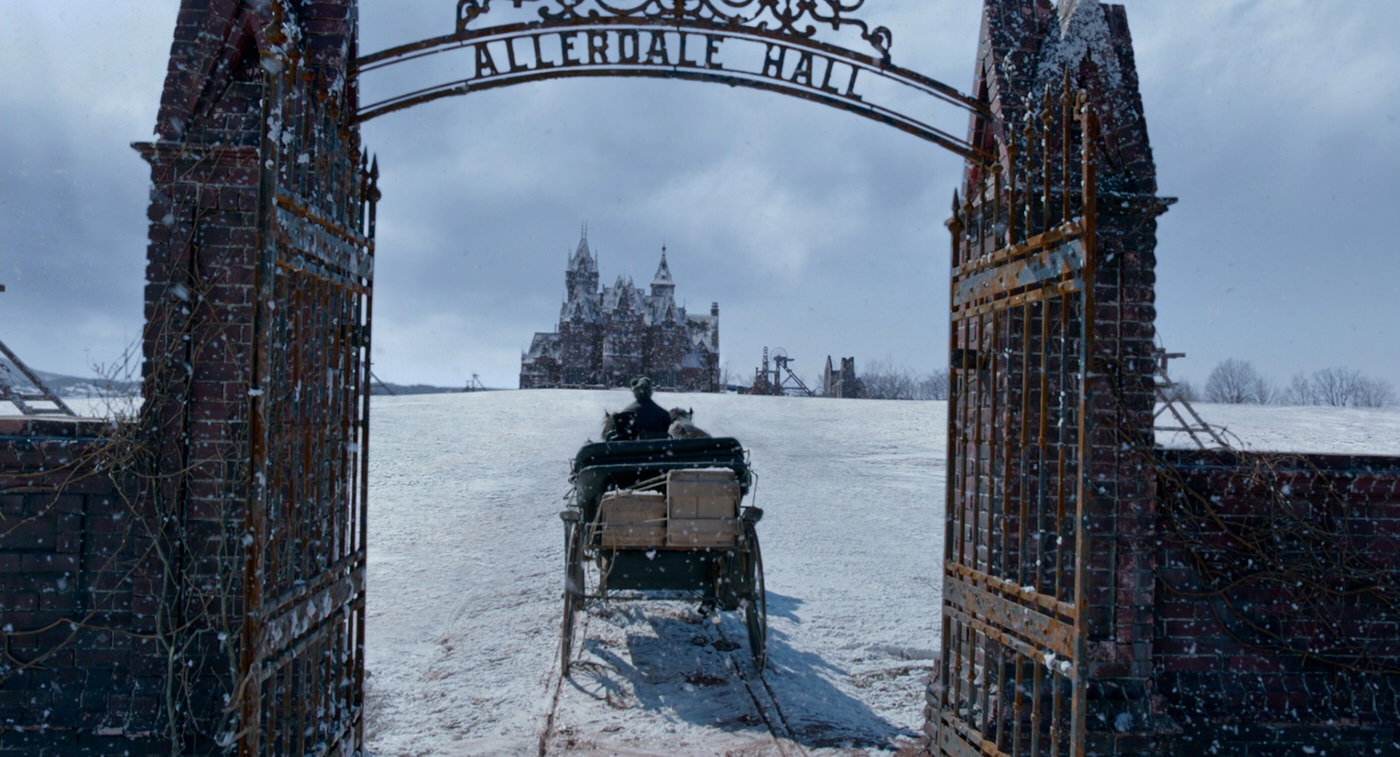
"Crimson Peak" (2015), directed by Guillermo del Toro, is a gothic romance film infused with horror elements. Known for its stunning visual aesthetic, the film is a sumptuous feast of elaborate costumes, moody lighting, and intricate set designs. The central architectural marvel is Allerdale Hall, the dilapidated yet grandiose mansion sitting on a mine of blood-red clay, which gives the movie its name. The house, with its crumbling walls, labyrinthine corridors, and eerily beautiful haunting apparitions, is a visual character in itself, embodying the story's themes of decay and the past's influence on the present.
The film follows aspiring author Edith Cushing, who marries the charming yet mysterious Sir Thomas Sharpe. Upon moving into Allerdale Hall, Edith encounters terrifying ghosts and begins to uncover her husband's dark secrets. The dramatic visual aesthetics serve to heighten the film's gothic romance elements, imbuing the narrative with a sense of otherworldly dread and melancholic beauty.
#8 The Others (2001)
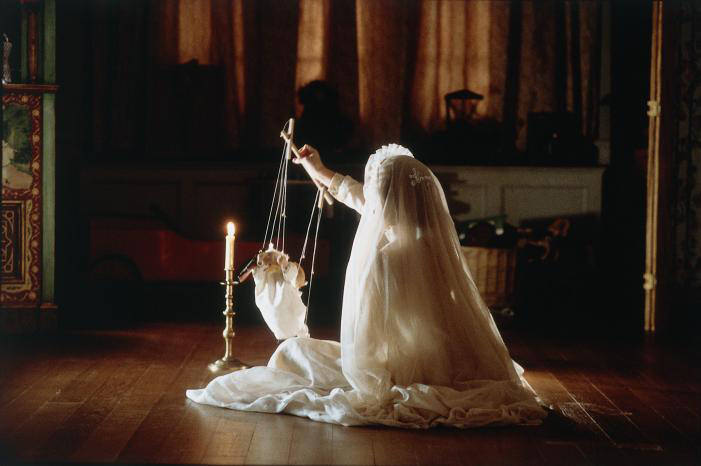
"The Others" (2001), directed by Alejandro Amenábar, is a horror film with a powerful aesthetic that relies heavily on its atmospheric use of light and shadow. The film is predominantly shot in a gloomy, muted palette to mimic the effect of living in a house with the curtains perpetually drawn, a necessity due to the light-sensitive condition of the protagonist's children. This constrained lighting creates a claustrophobic and ghostly environment, where every creak and whisper is amplified.
The story revolves around Grace, a devoutly religious woman who lives with her two photosensitive children in a large, isolated mansion awaiting the return of her husband from World War II. As they begin to experience inexplicable occurrences, Grace becomes convinced their home is haunted. The stark, austere aesthetics contribute significantly to the growing sense of tension and paranoia, culminating in a chilling climax that redefines the haunted house genre.
#9 Don’t Look Now (1973)
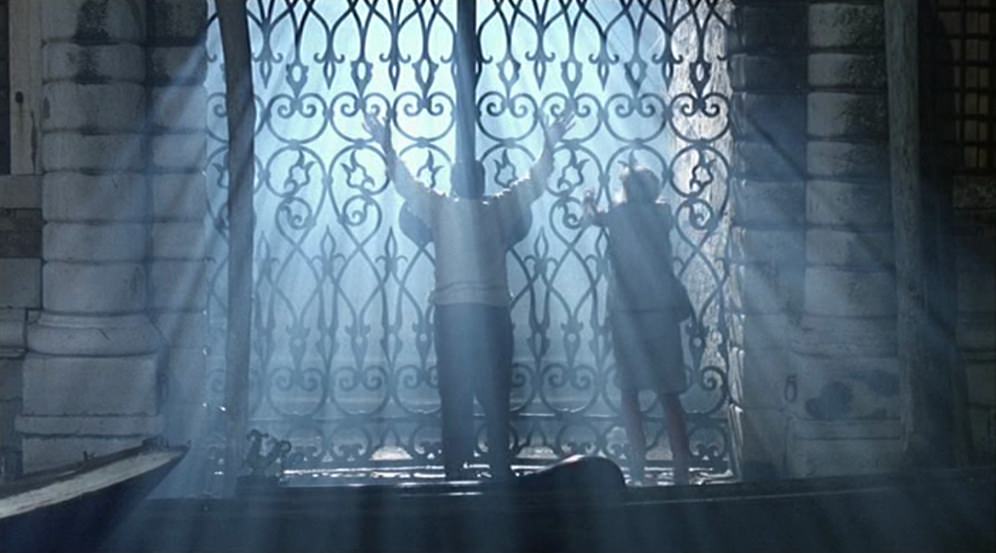
"Don't Look Now" (1973), directed by Nicolas Roeg, is a British-Italian horror film that masterfully intertwines a rich visual aesthetic with an enigmatic narrative. The movie is particularly noted for its creative use of editing and color symbolism, most notably red, which is continually associated with danger and premonitions. Venice's off-season, with its misty, labyrinthine canals and decaying grandeur, serves as an atmospheric backdrop, contributing significantly to the film's sense of foreboding.
The plot revolves around John and Laura Baxter, a British couple who travel to Venice following the accidental death of their daughter. While John immerses himself in his restoration work, Laura encounters two elderly sisters, one of whom claims to have psychic abilities and insists their daughter is trying to contact them. As John starts experiencing disorienting visions, the film's hauntingly beautiful visuals compound the sense of dread and unease. T
#10 Only Lovers Left Alive (2013)
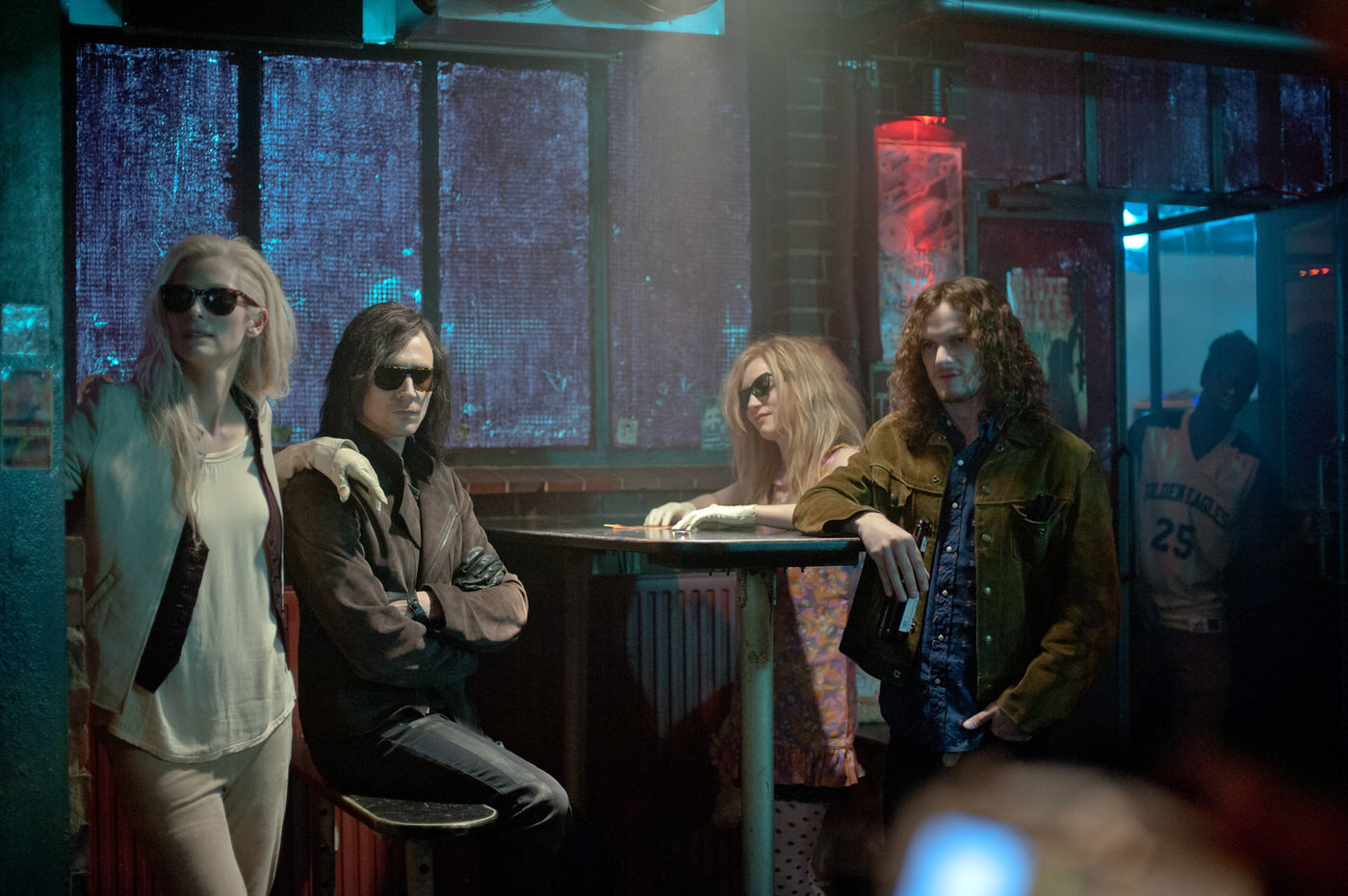
"Only Lovers Left Alive" (2013), directed by Jim Jarmusch, is an atmospheric vampire film that melds horror, romance, and drama. The film's aesthetic is steeped in an aura of moody decadence, blending gothic elements with a rock-and-roll vibe. The visuals are dominated by a rich color palette of deep reds and velvety blacks, with the scenes often bathed in a nocturnal glow that enhances the romanticism and melancholy of the vampire protagonists' existence. The film showcases the old-world charm of Tangier and the decaying beauty of Detroit, employing these contrasting landscapes to add layers of meaning to the narrative.
The story centers around Adam and Eve, centuries-old lovers who are also vampires. Adam, a reclusive musician, is disillusioned with the modern world, while Eve retains her curiosity and zest for life. When Eve's reckless sister arrives, their peaceful life is disrupted. With its unique blend of art, music, science, and supernatural elements, the film uses its lush visuals and languid pace to explore themes of love, despair, and the passage of time.
#11 A Tale of Two Sisters (2003)
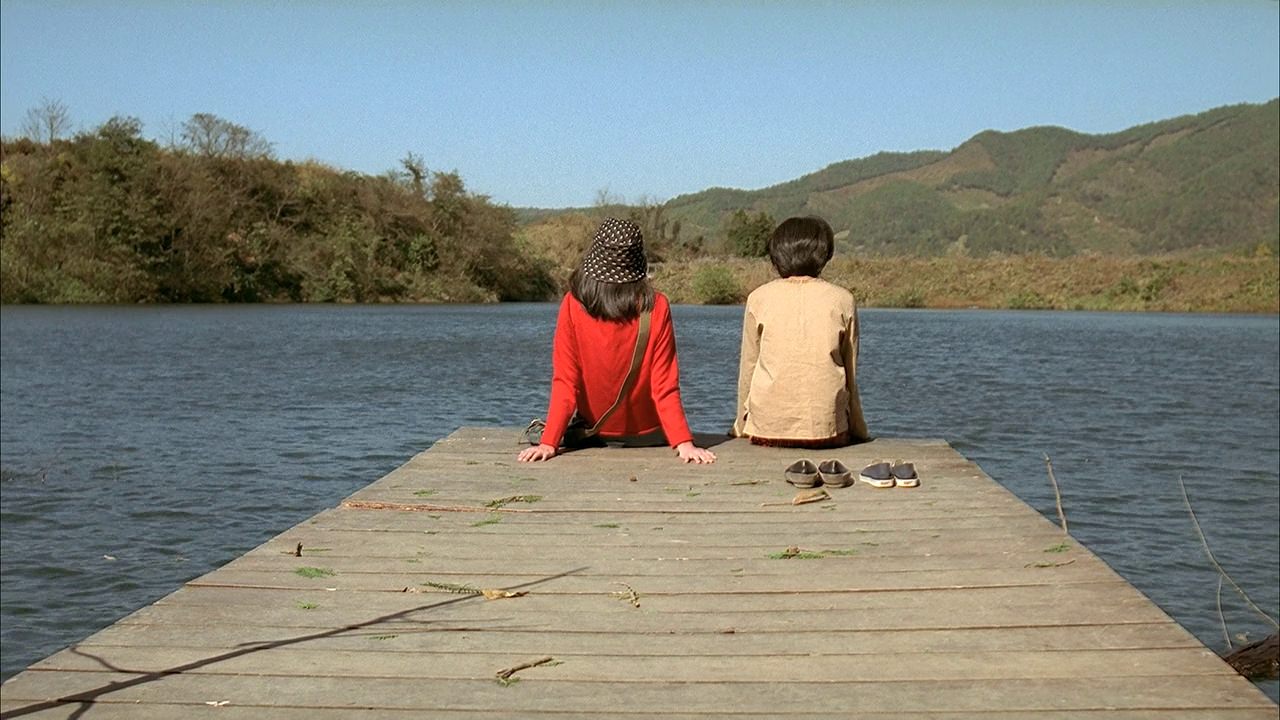
"A Tale of Two Sisters" (2003), directed by Kim Jee-woon, is a South Korean psychological horror-drama that skillfully employs an atmospheric and dreamlike aesthetic to enhance its haunting narrative. The film uses a muted color palette and beautiful cinematography to create an eerie sense of unease. Its visual storytelling is filled with symbolic imagery and metaphors, often blurring the lines between reality and fantasy. The intricate production design of the old family house, with its shadowy corners and antique furniture, contributes to the film's tense and oppressive atmosphere.
The story follows Soo-mi and her younger sister Soo-yeon, who return home after a stay in a mental institution following their mother's death. They find their home changed with a cruel stepmother and strange occurrences that hint at a darker secret. The narrative is full of twists and turns, using its visual aesthetics and unconventional storytelling to create a deeply unsettling exploration of guilt, grief, and the fragility of the mind.
#12 The Innocents (1961)
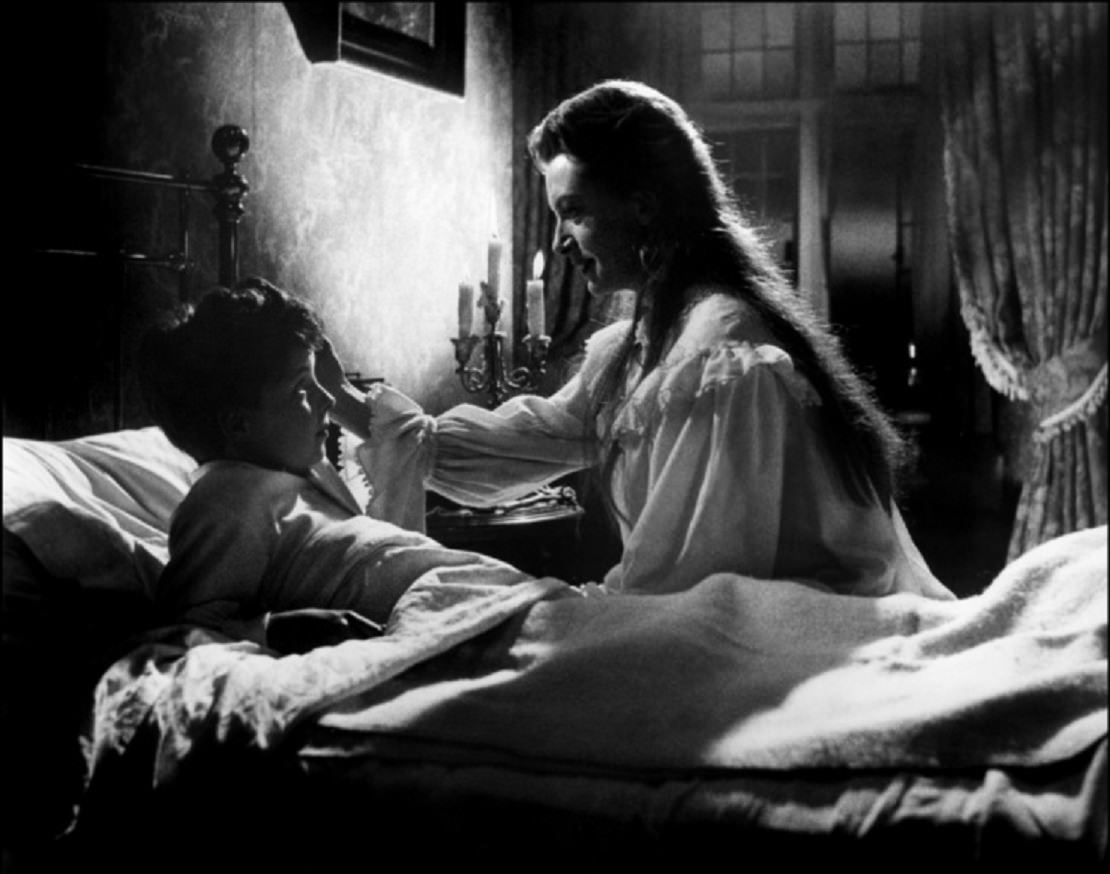
"The Innocents" (1961), directed by Jack Clayton, is a British psychological horror film that makes stunning use of black-and-white cinematography to enhance its gothic atmosphere. The film's aesthetic is characterized by high-contrast lighting and striking compositions, with many scenes shot in deep focus to maintain a sense of uncanny unease. The grand yet isolated country estate, with its lush gardens, dark corridors, and reflective surfaces, serves as a perfect backdrop for the ghostly occurrences, with its deceptive beauty adding to the haunting atmosphere.
The plot follows Miss Giddens, a governess hired to care for two children, Flora and Miles, at a remote estate. As she begins to suspect the children are being influenced by malicious spirits, the film explores themes of innocence, corruption, and madness. The film's visuals cleverly manipulate light and shadow, interior and exterior spaces, and the spectral presence of the unseen, mirroring the increasingly disturbed mental state of Miss Giddens.
#13 It Follows (2014)

"It Follows" (2014), directed by David Robert Mitchell, is a modern horror film that utilizes a unique aesthetic to amplify its tension and sense of dread. The film has a timeless quality with its visually striking blend of retro and modern elements, characterized by suburban landscapes, decaying cityscapes, and an autumnal color palette. The cinematography often features wide-angle shots and slow pans to create a sense of paranoia, as if danger could appear from anywhere at any time.
The plot revolves around Jay, a college student who, after a sexual encounter, is pursued by a supernatural entity that only she can see. This relentless entity takes on the form of various people and walks slowly towards her, never stopping. The film's unique aesthetic, combined with its synth-driven score reminiscent of 80's horror films, adds to the disorienting, dreamlike atmosphere, heightening the fear of the unseen and inevitable.
#14 The Birds (1963)
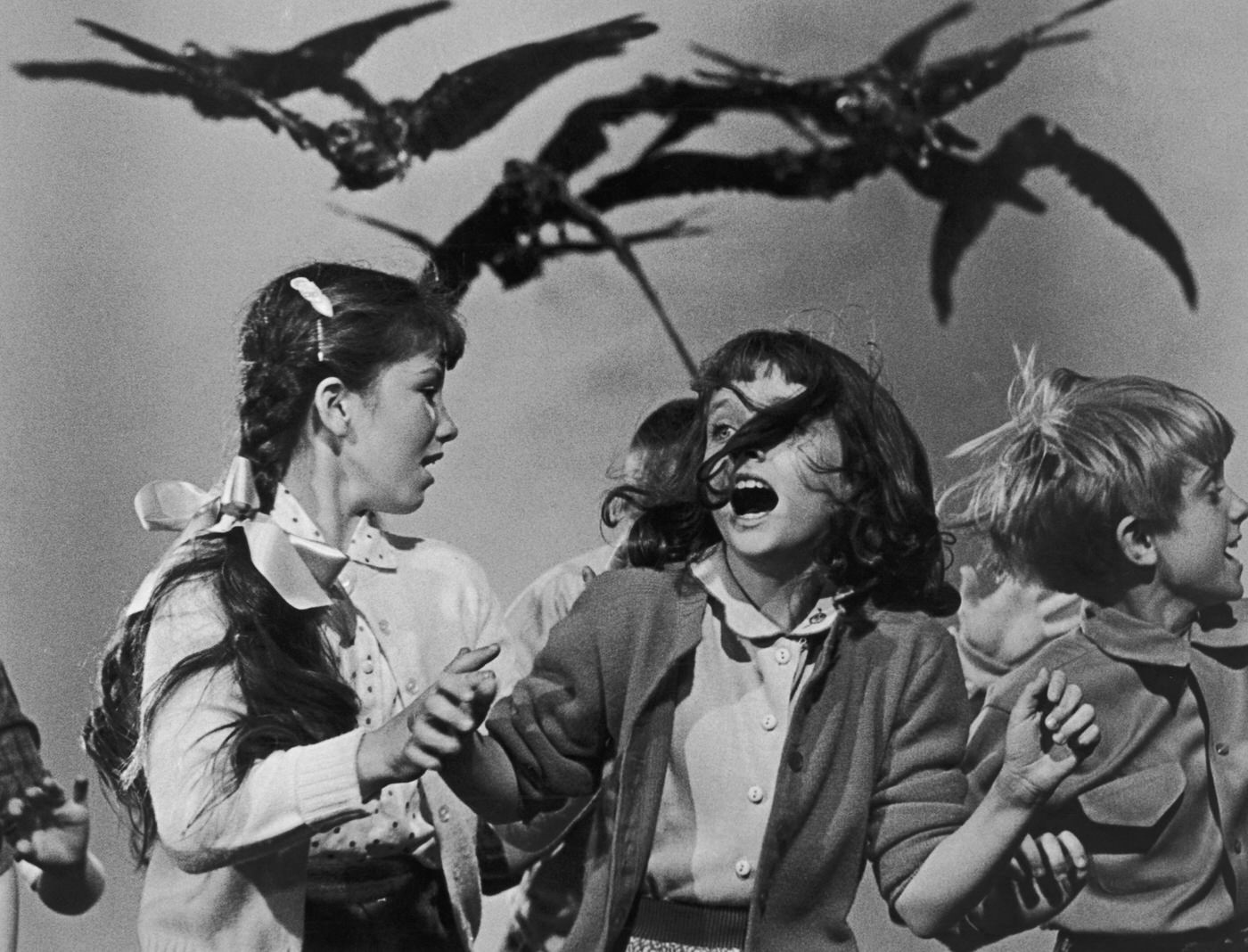
"The Birds" (1963), directed by Alfred Hitchcock, is a classic horror-thriller that utilizes a powerful visual aesthetic to create suspense and terror. The film's aesthetic is grounded in its portrayal of everyday settings being invaded by sinister forces, namely the flocks of birds that turn menacing. The quaint seaside town of Bodega Bay, with its bright, sunny outdoors and cozy interiors, contrasts sharply with the dark, chaotic bird attacks, making the horror all the more jarring.
The story follows a wealthy socialite, Melanie Daniels, who visits Bodega Bay to deliver a pair of lovebirds to a man she's recently met. Soon after her arrival, the town is besieged by violent bird attacks. Hitchcock uses clever camera work, including high-angle shots and point-of-view sequences, to build suspense and a sense of impending doom. There's an uncanny beauty to the scenes of the birds massing for attack, making the film visually memorable. Hitchcock's decision to avoid any musical score, opting instead for an electronic soundtrack that mimics bird sounds, further enhances the tension. "
#15 The Babadook (2014)
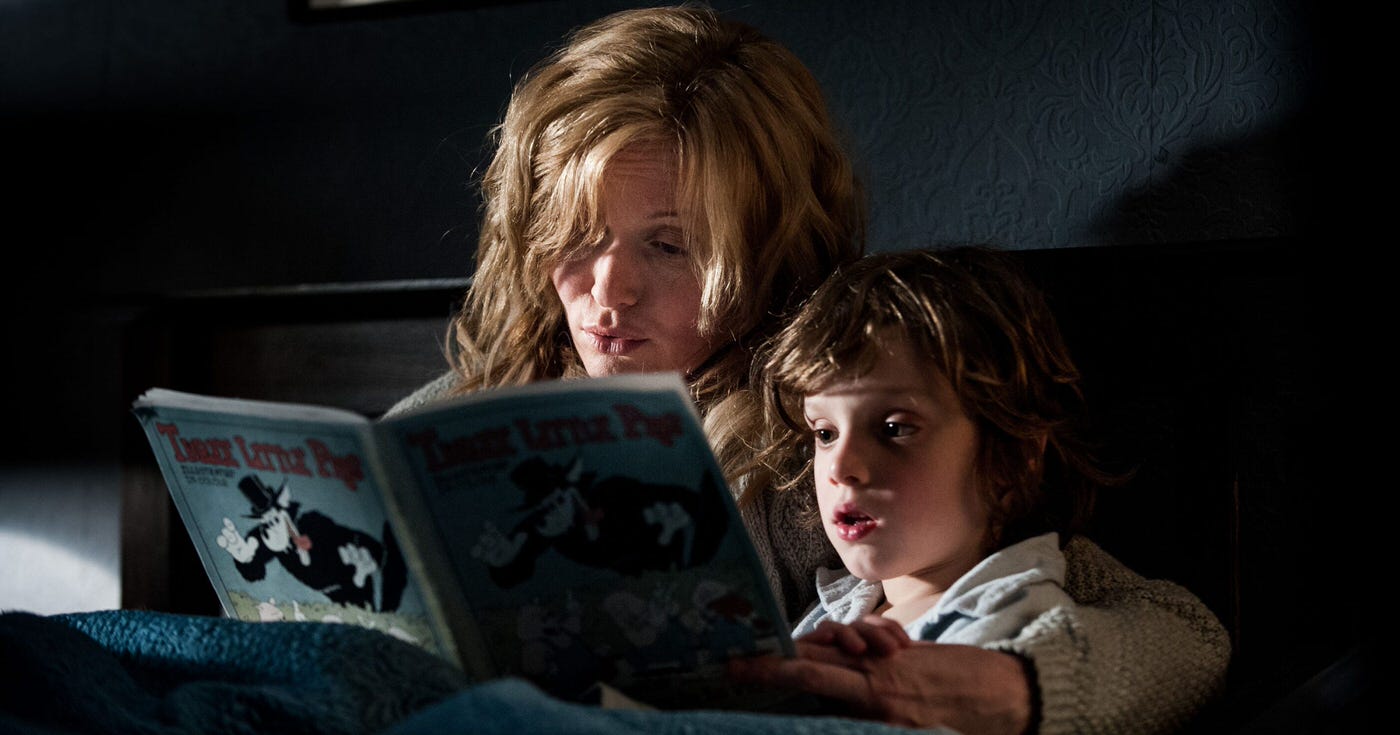
"The Babadook" (2014), directed by Jennifer Kent, is an Australian horror film that creates an eerie atmosphere through its distinct visual aesthetic. The film employs a muted color palette dominated by grays and blacks, reflecting the dreariness of the protagonists' lives and the looming presence of the Babadook. Its claustrophobic framing, along with the eerie illustrations in the 'Mister Babadook' pop-up book, further contribute to the sense of unease.
The story follows Amelia, a widowed mother struggling to manage her son Samuel's behavioral issues and her own grief. When a creepy children's book titled 'Mister Babadook' appears in their house, they begin to experience terrifying phenomena linked to the titular creature. The film uses its visuals to symbolize the characters' emotional state, with the Babadook itself serving as a manifestation of suppressed grief and depression.
#16 A Girl Walks Home Alone at Night (2014)
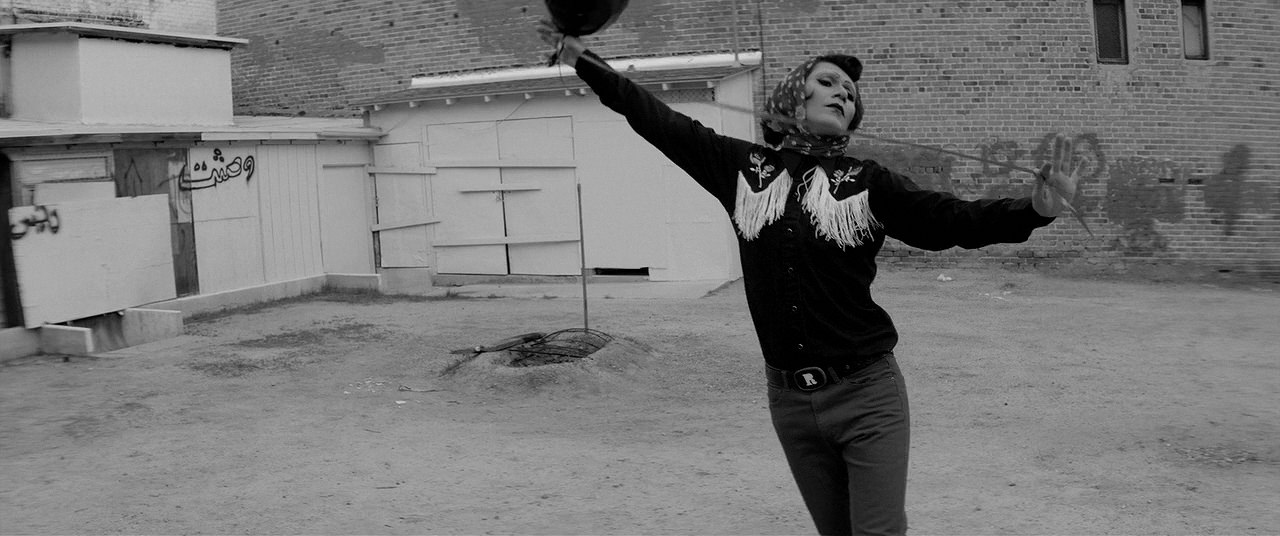
A Girl Walks Home Alone at Night" (2014), directed by Ana Lily Amirpour, is a unique fusion of horror, western, and romance genres, often described as the first "Iranian Vampire Western". The film's aesthetic is marked by its stark black-and-white cinematography, which creates a moody and atmospheric landscape. The deserted Iranian ghost-town Bad City, captured in a series of beautifully composed long shots, becomes a haunting character in itself.
The story centers around a lonesome vampire, known only as The Girl, who stalks the streets of Bad City at night, preying on its malevolent inhabitants. The film's visual style is imbued with a dreamy quality, blending elements of graphic novels, classic horror cinema, and modern indie filmmaking. Key visual motifs, such as the chador worn by The Girl (which morphs into a vampire's cape) or the vintage American car driven by the male lead, contribute to the film's uncanny, out-of-time feel.
#17 Rosemary’s Baby (1968)
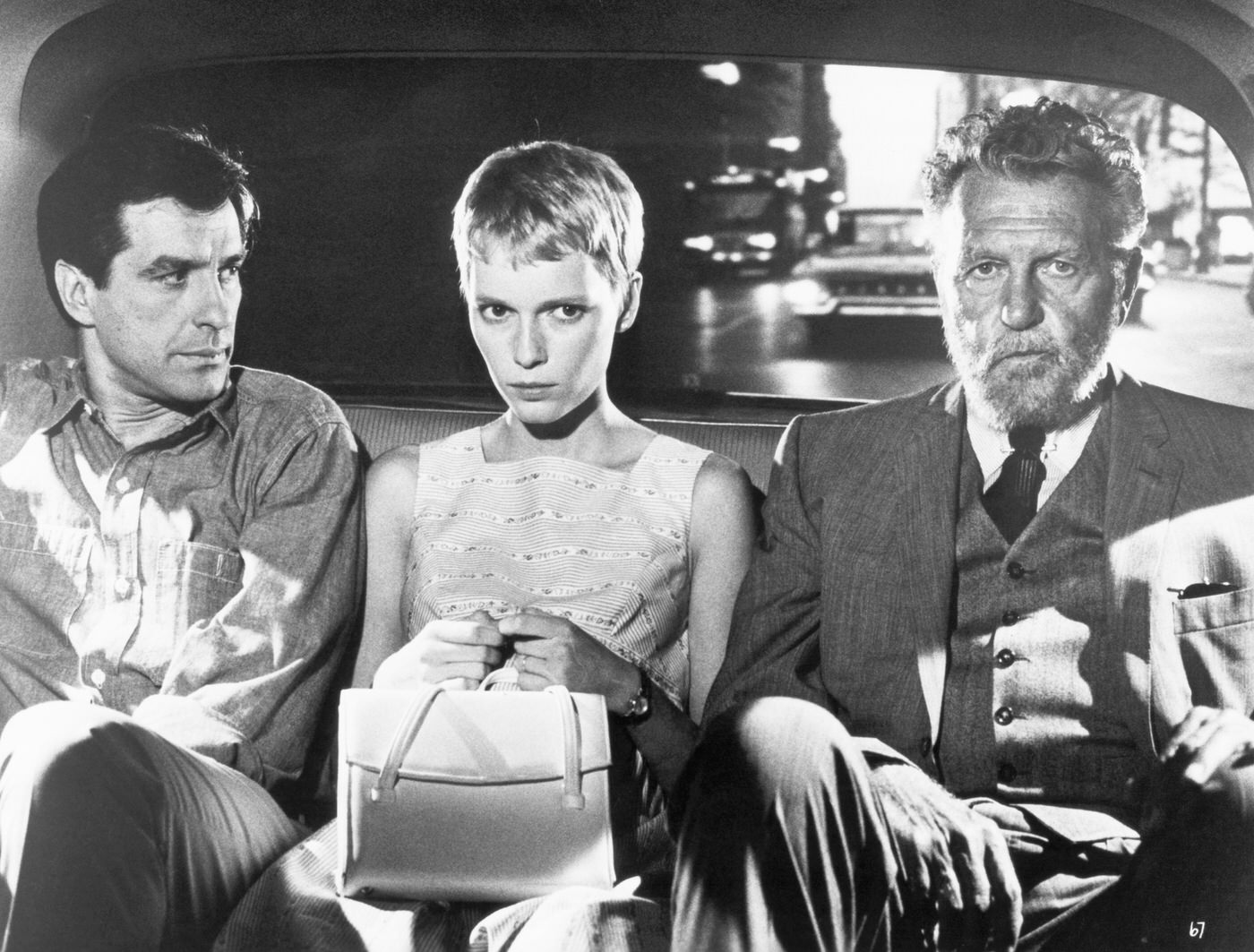
"Rosemary's Baby" (1968), directed by Roman Polanski, is a psychological horror film recognized for its deeply unsettling atmosphere created by its distinct aesthetic. The film utilizes its urban setting effectively, as the grandeur and intricacy of the Bramford apartment building becomes an oppressive force. The apartment, with its dark, rich colors and antiquated decor, serves as a character in itself, contributing to the film's ominous mood.
The plot centers on Rosemary Woodhouse, a young woman who, along with her ambitious actor husband Guy, moves into the Bramford. After Rosemary becomes pregnant following a strange dream, she grows increasingly paranoid about the safety of her unborn baby, suspecting her intrusive neighbors and her husband of sinister intentions. The film's aesthetics are instrumental in creating a sense of dread and suspense, from the claustrophobic interiors of the apartment to the eerie lullaby that serves as the film's theme.
#18 The Neon Demon (2016)
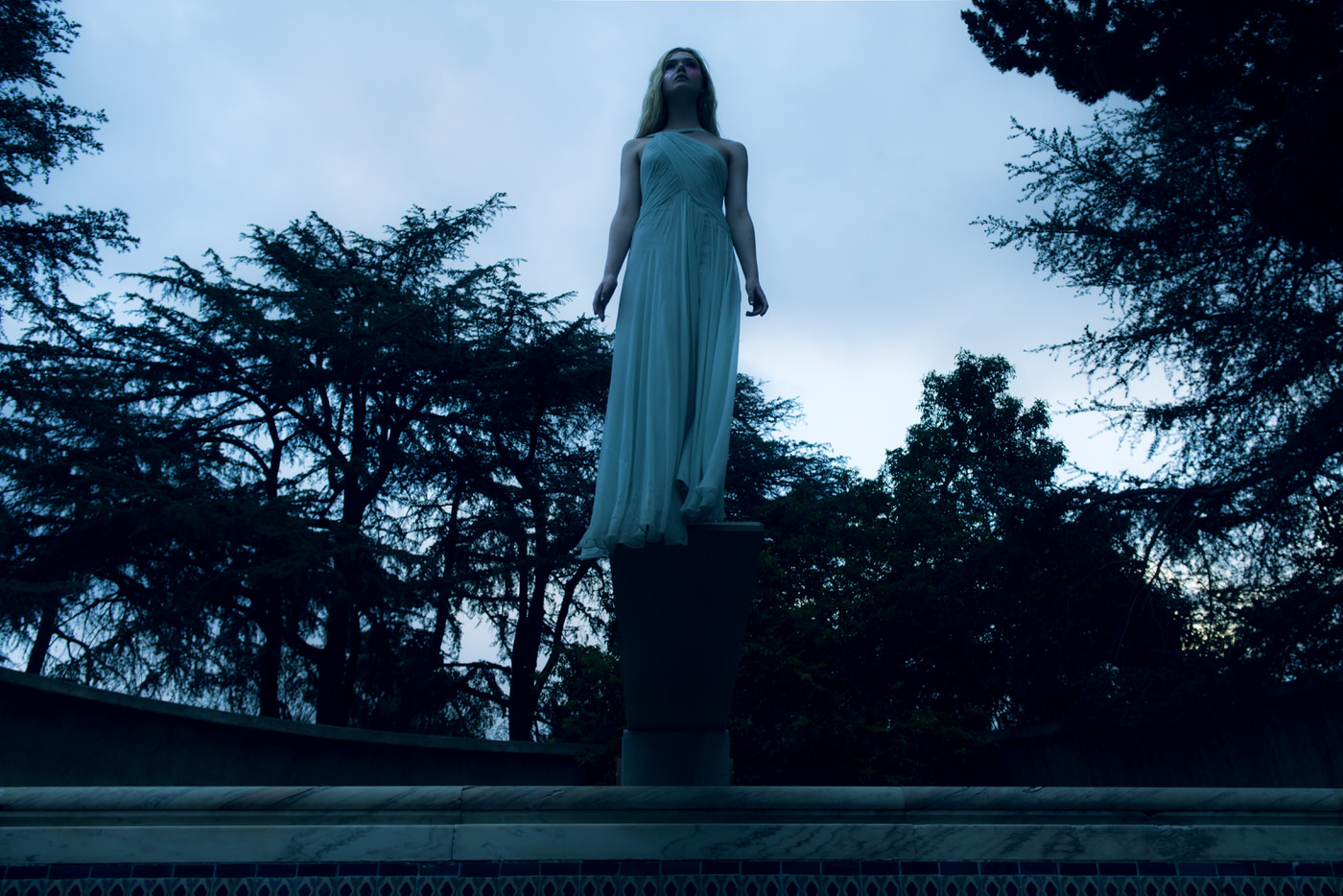
"The Neon Demon" (2016), directed by Nicolas Winding Refn, is a psychological horror film that employs a bold and striking aesthetic to create a disturbing exploration of the fashion industry. The film stands out for its highly stylized visual approach, characterized by its vibrant neon color palette, symmetrical compositions, and glossy surfaces, effectively mirroring the glamorous yet superficial world of fashion.
The plot follows Jesse, a young aspiring model, who moves to Los Angeles and quickly rises in the industry, eliciting jealousy from her older, more experienced peers. The film's visuals are symbolic of the industry's commodification and consumption of youth and beauty. It uses visually stunning sequences, such as a fashion show transformed into a kaleidoscopic nightmare or a surreal photoshoot in an empty, high-end mansion, to evoke a sense of unease and danger beneath the industry's glamorous facade.
#19 The Shape of Water (2017)

"The Shape of Water" (2017), directed by Guillermo del Toro, is a romantic horror fantasy film known for its mesmerizing visuals and fairy-tale aesthetics. Set in the 1960s, the film incorporates a unique blend of saturated colors, with a predominant aquatic blue-green palette, along with intricate production design that captures both the beauty and grime of the period.
The story follows Elisa, a mute janitor working at a government research facility, who forms an unexpected bond with a captured aquatic humanoid creature. The film's aesthetics significantly contribute to the story's otherworldly feel. The creature, despite being terrifying in a conventional sense, is depicted with a certain allure and elegance that matches the film's overall tone. The interplay of light, color, and water, combined with Alexandre Desplat's whimsical score, creates a captivating, dream-like atmosphere.
#20 Get Out (2017)
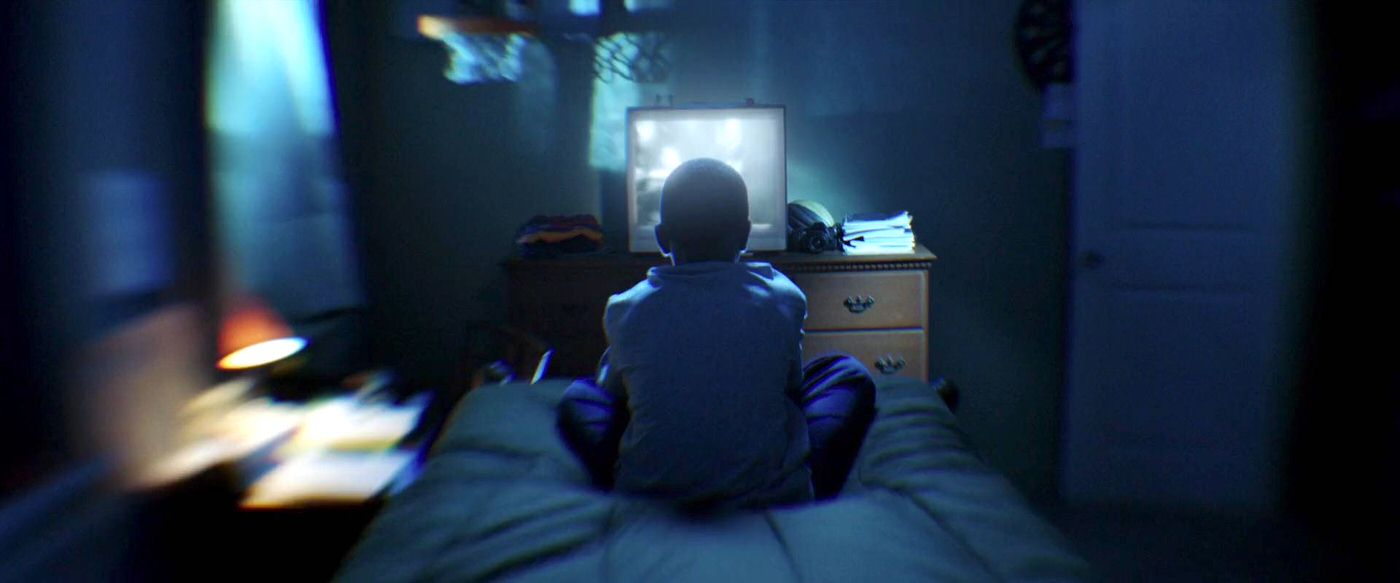
"Get Out" (2017), directed by Jordan Peele, is a socially-conscious horror film that employs a chilling visual aesthetic to convey its sharp critique of racism. The film contrasts its idyllic suburban setting, with its manicured lawns and upscale homes, against the escalating horror, amplifying the underlying sense of wrongness.
The story follows Chris, a young African-American man who visits his white girlfriend Rose's family estate, only to discover the chilling truth beneath their welcoming facade. The film's visual language is rich with symbolism: for example, the recurring motif of the color red signals danger, while the "Sunken Place"—a void where Chris is sent during hypnosis—is a haunting visual metaphor for the silencing and marginalization of Black voices.
#21 Us (2019)
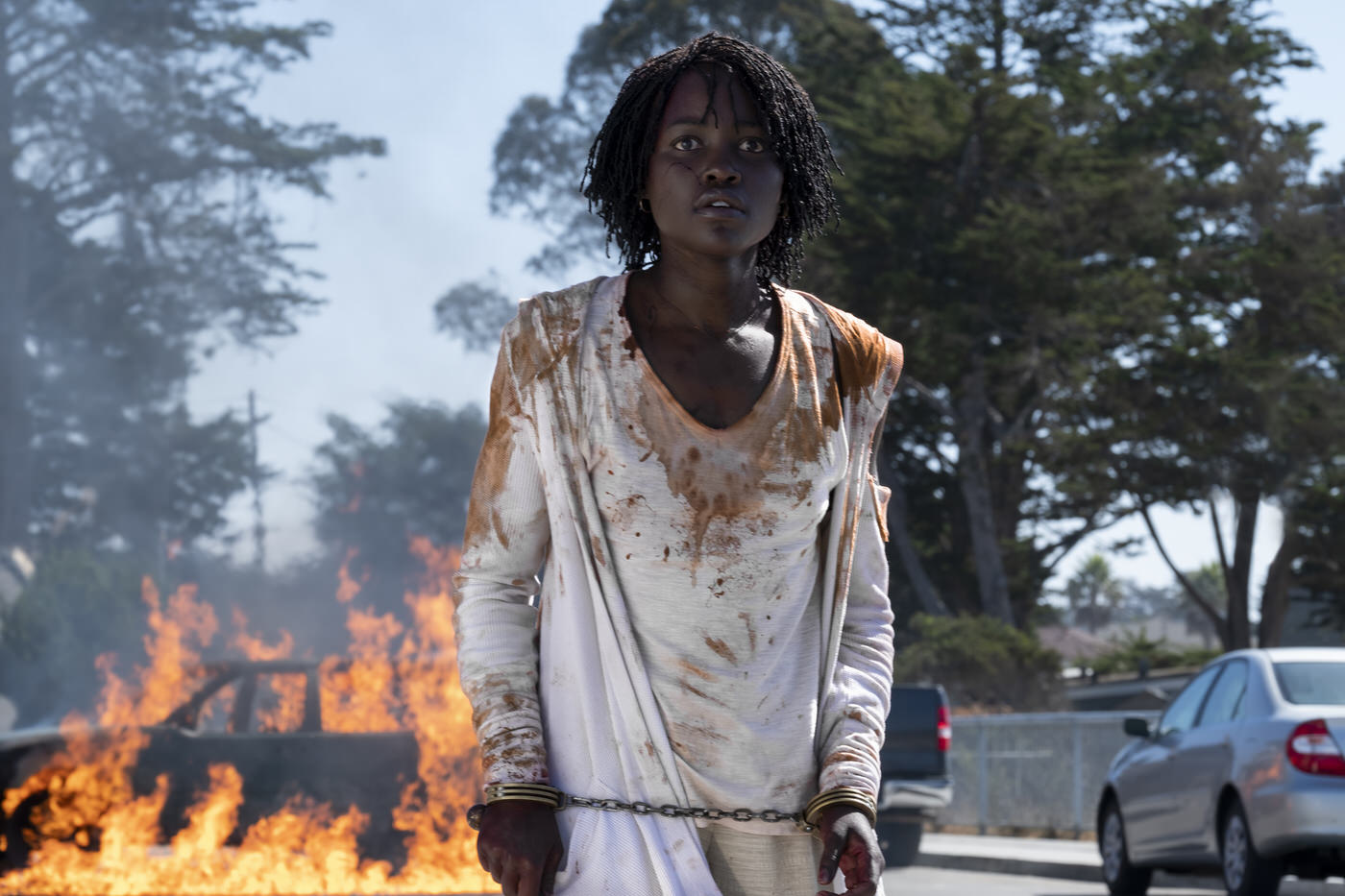
"Us" (2019), also directed by Jordan Peele, is a horror-thriller that uses a distinctive visual aesthetic to explore its thematic underpinnings about identity, duality, and social inequality. The film's visual palette contrasts sunny beachside settings with the darkness of underground tunnels, embodying the divide between the surface and what lies beneath.
The plot centers around Adelaide Wilson and her family, whose beach vacation turns horrific when their doppelgängers invade their home. The doppelgängers, called the 'Tethered', are identical to them but move and speak in uncanny, distorted ways. The use of mirrors, shadows, and doubles throughout the film creates a chilling atmosphere of familiar-turned-alien.
Notable visual elements include the red jumpsuits worn by the 'Tethered', which stand out starkly against the often dimly lit settings, and the haunting image of a line of people stretching into the distance, holding hands in an eerie parody of a charity event. With its evocative imagery and symbolic visual language, "Us" uses its aesthetics to heighten the horror and further its exploration of societal themes.
#22 The Lighthouse (2019)
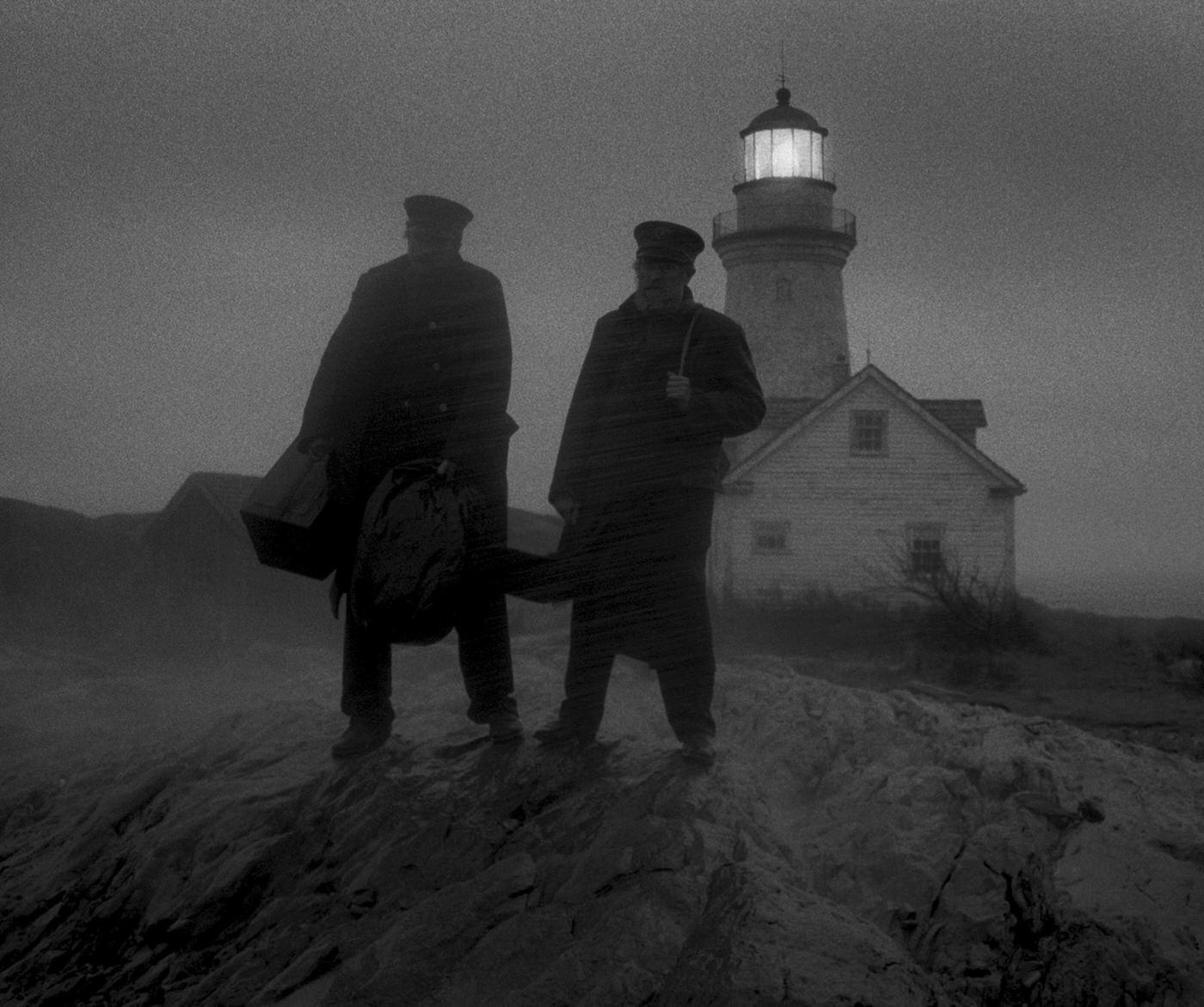
"The Lighthouse" (2019), directed by Robert Eggers, is a psychological horror film that immerses viewers in a visually stunning and atmospheric black-and-white world. The film's aesthetic pays homage to the visual style of early 20th-century cinema, employing a boxy aspect ratio and stark contrasts to create a sense of claustrophobia and isolation.
Set on a remote New England island in the late 19th century, the story follows two lighthouse keepers, Thomas Wake and Ephraim Winslow, as they descend into madness while tending to their duties. The film's visuals emphasize the harshness of the environment, with powerful storm sequences, tumultuous waves, and the omnipresent towering lighthouse acting as a symbol of both guidance and torment.
#23 Let The Right One In (2008)
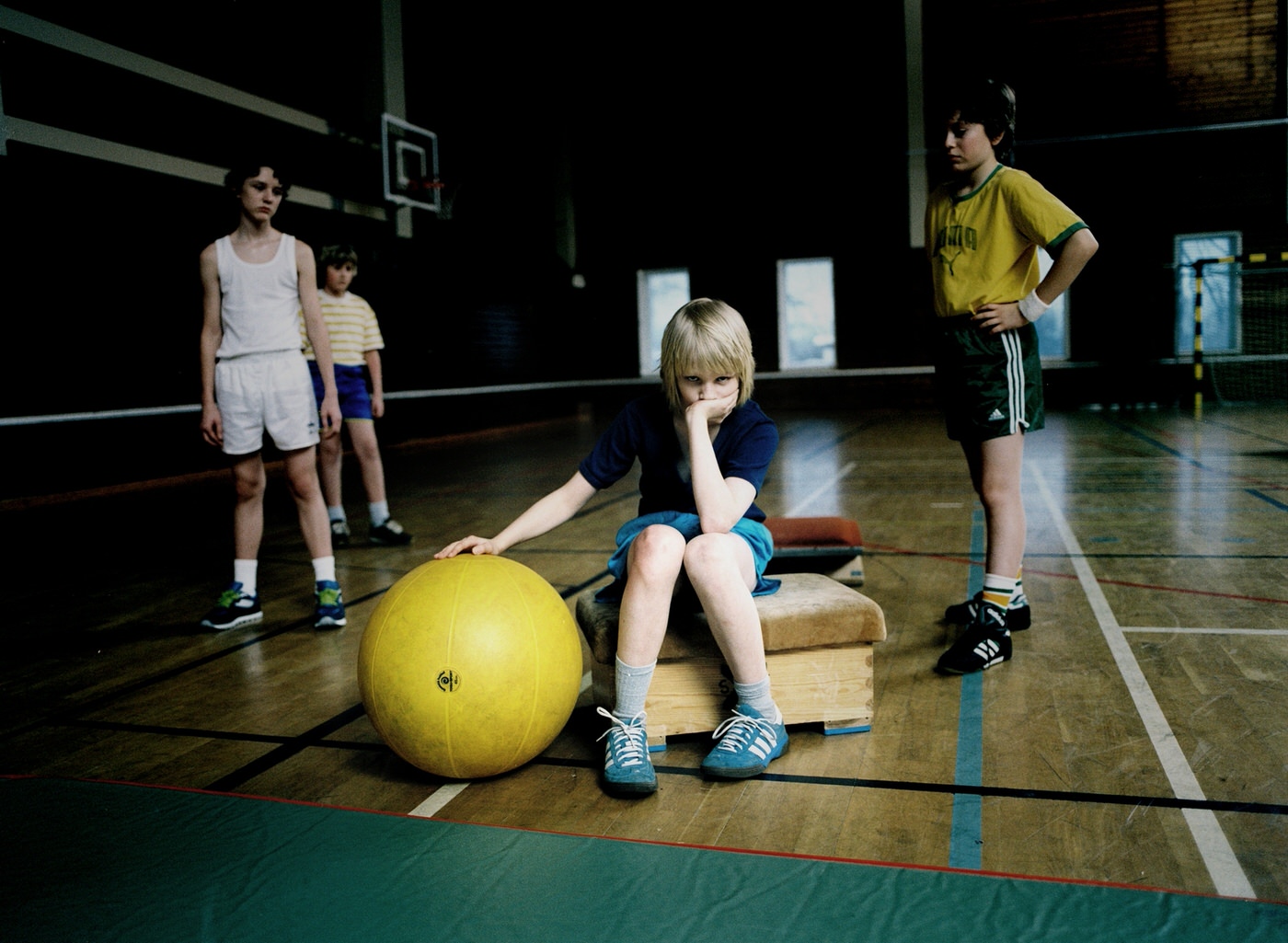
"Let the Right One In" (2008), directed by Tomas Alfredson, is a Swedish vampire horror film that intertwines a haunting aesthetic with a tender coming-of-age story. The film's visual style is characterized by its wintry, desolate landscapes and a muted color palette, reflecting the bleakness of its setting and the melancholic nature of the narrative.
Set in a snowy Stockholm suburb, the story follows Oskar, a lonely 12-year-old boy who befriends Eli, a peculiar young girl who happens to be a vampire. The film's visuals capture the juxtaposition of innocence and darkness, portraying the chilling beauty of the Scandinavian winter alongside the horror of violence and death.
Alfredson's deliberate pacing, atmospheric lighting, and stunning cinematography create a sense of eerie stillness, making every moment feel significant. The film's aesthetic choices, such as the use of minimal dialogue and subtle facial expressions, amplify the emotional impact of the story and the relationship between the two young protagonists.
#24 The Devil’s Backbone (2001)
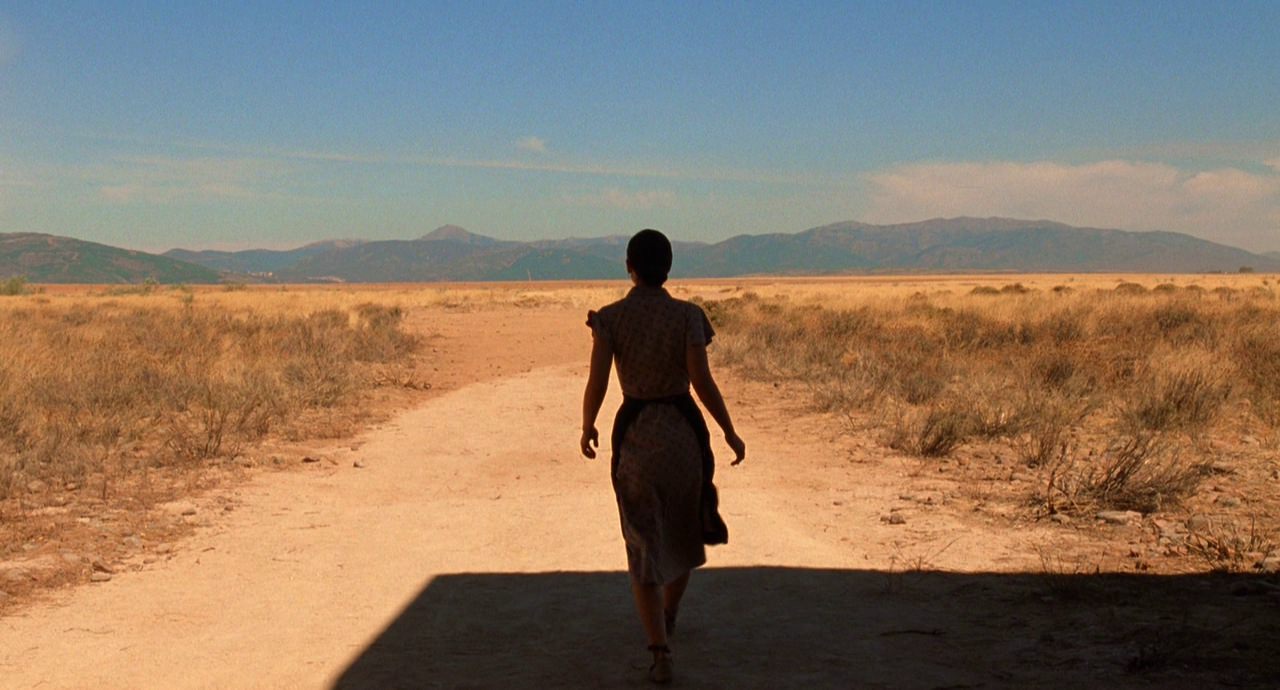
The Devil's Backbone" (2001), directed by Guillermo del Toro, is a visually captivating supernatural horror film that blends elements of gothic horror and historical drama. The film's aesthetic is marked by its evocative cinematography, rich production design, and a masterful use of color and lighting.
Set during the Spanish Civil War, the story takes place in an isolated orphanage that harbors secrets. The visuals beautifully capture the decaying, war-torn environment, with hauntingly desolate landscapes and the eerie atmosphere of the orphanage itself. Del Toro's signature blend of fantasy and reality is evident in the presence of ghostly apparitions and symbolic imagery.
The film's use of color is particularly notable, with warm earth tones contrasting with colder blue hues, enhancing the contrasting themes of hope and despair. The visual motifs, such as the unexploded bomb at the center of the orphanage and the spectral figure of Santi, contribute to the film's exploration of guilt, loss, and the haunting legacy of war.
#25 Sleepy Hollow (1999)
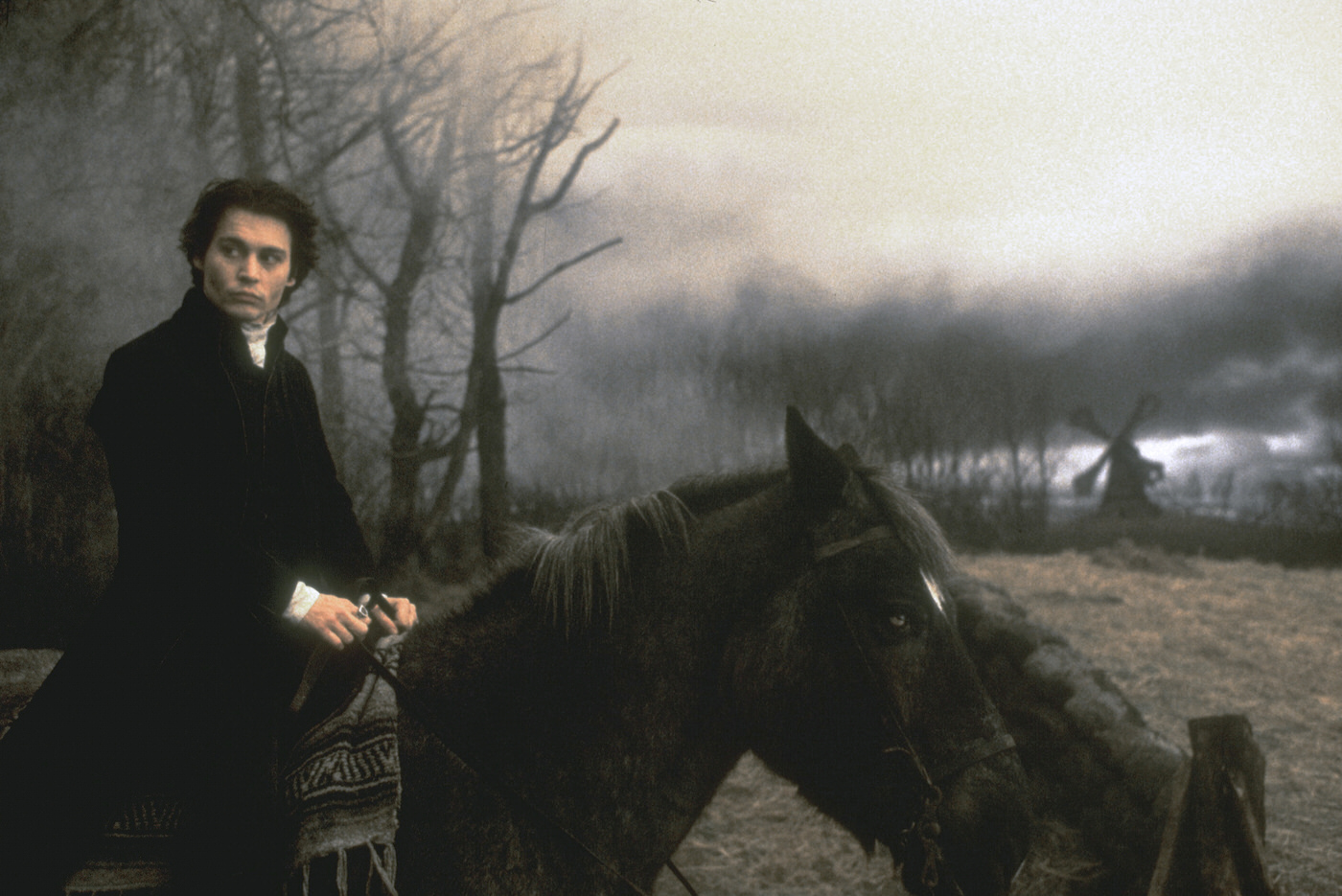
Sleepy Hollow" (1999), directed by Tim Burton, is a visually enchanting gothic horror film that showcases Burton's signature aesthetic style. The film's visuals are characterized by their dark, atmospheric setting, ornate production design, and a whimsical blend of horror and macabre humor.
Set in the 18th century, the story follows Ichabod Crane, a detective sent to the town of Sleepy Hollow to investigate a series of mysterious beheadings attributed to the legendary Headless Horseman. The film's aesthetic transports viewers to a world of eerie forests, fog-drenched landscapes, and dilapidated mansions, evoking a sense of both beauty and foreboding.
Burton's visual approach pays homage to gothic literature and German Expressionism, with exaggerated architecture and stylized compositions. The use of rich, deep colors, such as the vibrant reds and deep blacks, heightens the film's haunting atmosphere. The intricate costumes and intricate set designs add to the film's atmospheric charm.
#26 Stoker (2013)
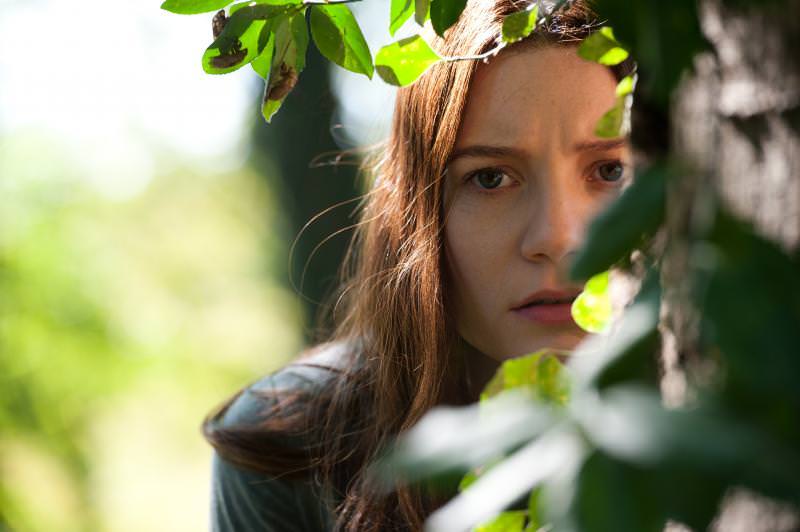
"Stoker" (2013), directed by Park Chan-wook, is a psychological thriller with a visually striking aesthetic that captures the dark and twisted nature of the story. The film's visuals are marked by meticulous composition, bold color schemes, and an emphasis on textures and details.
The story follows India Stoker, a young woman mourning the sudden death of her father. As she becomes increasingly drawn to her enigmatic uncle Charlie, dark family secrets are unraveled. The film's visual style is carefully crafted, with its use of symmetry, deep focus, and slow-paced cinematography creating an eerie and voyeuristic atmosphere.
Park Chan-wook's deliberate color choices, such as the vibrant reds, contrasting whites, and desaturated tones, enhance the film's themes of obsession and repression. The meticulous attention to production design, including the meticulously decorated interiors of the Stoker mansion, adds to the film's unsettling atmosphere.
#27 Hausu (1977)
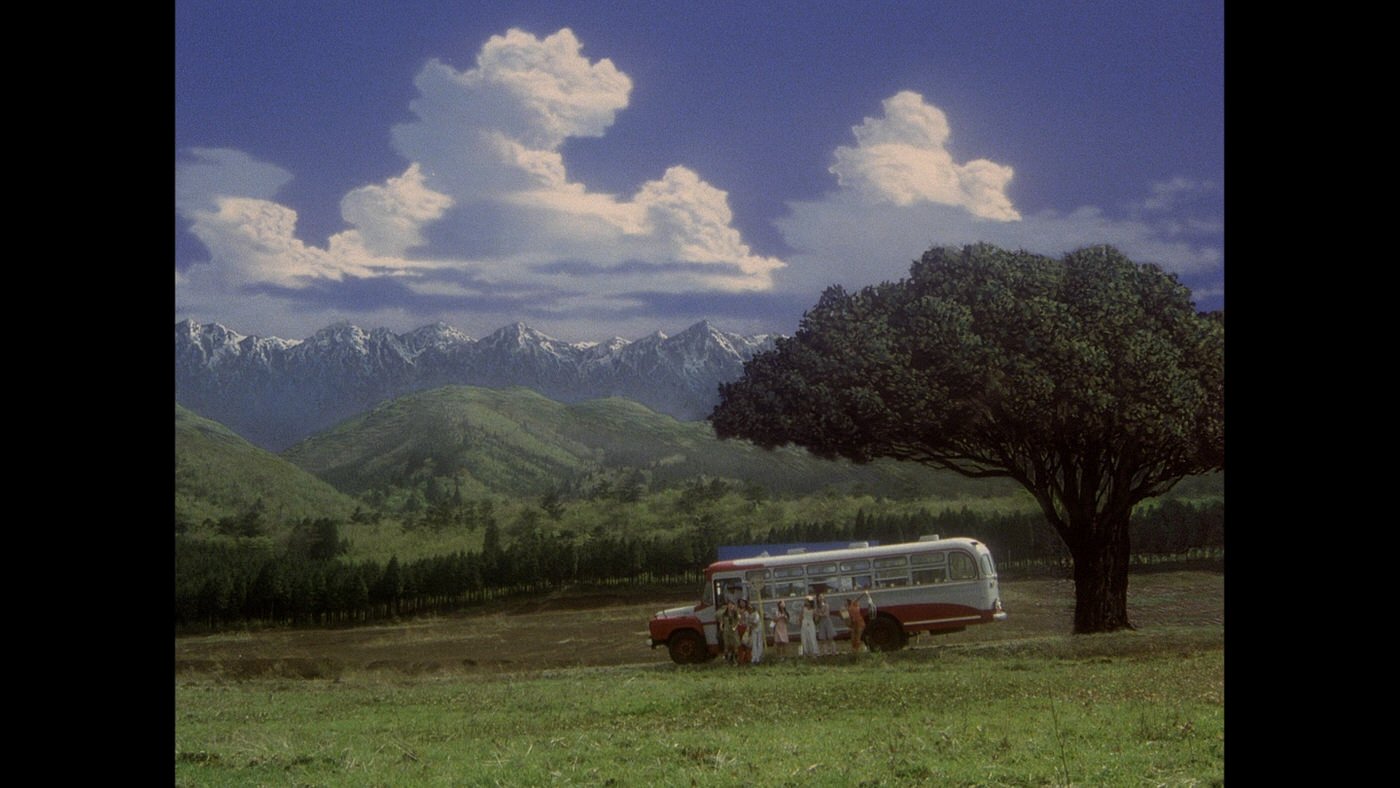
"Hausu" (1977), directed by Nobuhiko Obayashi, is a Japanese horror-comedy film that stands out for its wildly surreal and visually audacious aesthetic. The film's visuals are a riot of vibrant colors, experimental editing techniques, and a blend of live-action and surreal animation, creating a visually striking and unconventional experience.
The story revolves around a group of schoolgirls who visit a haunted house during their summer vacation, where they encounter supernatural horrors. "Hausu" embraces a highly stylized and imaginative visual approach, with its exaggerated performances, bizarre set designs, and fantastical imagery. Each character has a distinct personality that is visually emphasized through eccentric costumes and makeup.
The film's unconventional editing techniques, such as split screens, superimpositions, and rapid cuts, contribute to its sense of disorientation and absurdity. The vibrant and surreal visuals are juxtaposed with moments of horror and gore, creating a unique and disorienting blend of genres.
#28 The Color Out of Space (2019)
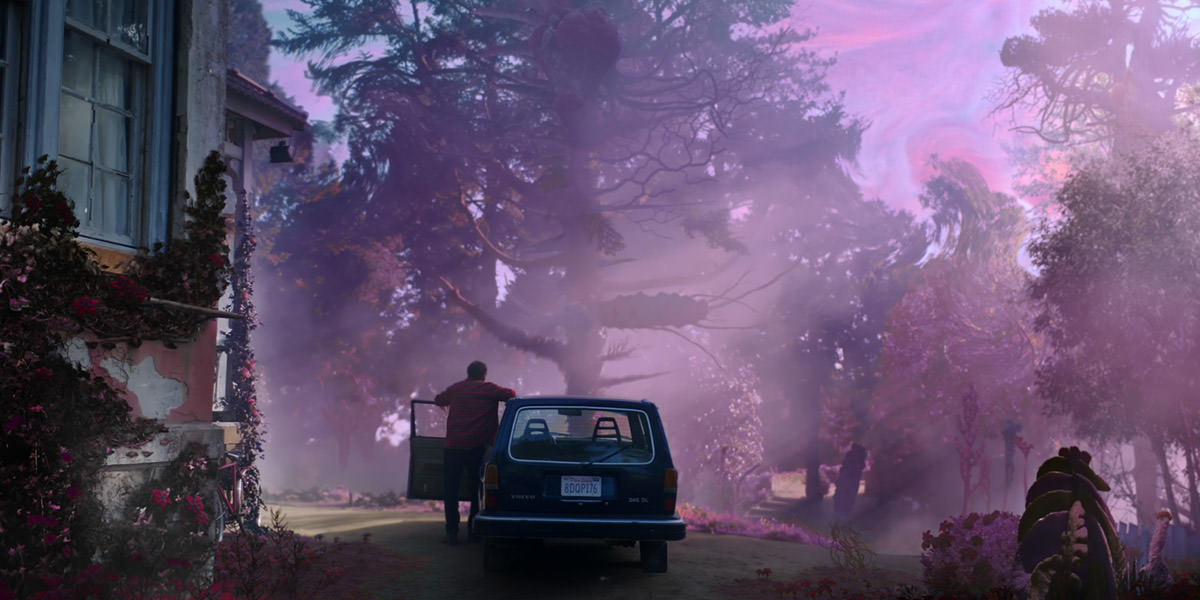
"The Color Out of Space" (2019), directed by Richard Stanley, is a cosmic horror film based on the novella by H.P. Lovecraft. The film's visual aesthetic is marked by a combination of eerie atmospheric shots, vibrant and otherworldly color palettes, and surreal imagery that captures the descent into madness and cosmic terror.
The story follows the Gardner family, who witness the impact of a mysterious extraterrestrial entity that infects their land and alters their reality. The film's visuals are carefully designed to reflect the unnatural and otherworldly nature of the cosmic horror. The use of vivid and unsettling colors, particularly a vibrant magenta hue, creates a disorienting and hallucinatory atmosphere.
The film's visual effects and practical creature designs contribute to its unsettling aesthetic, with grotesque mutations and unsettling transformations. The juxtaposition of the idyllic rural setting with the increasingly distorted and unnatural elements adds to the sense of dread and unease.
#29 The Cell (2000)
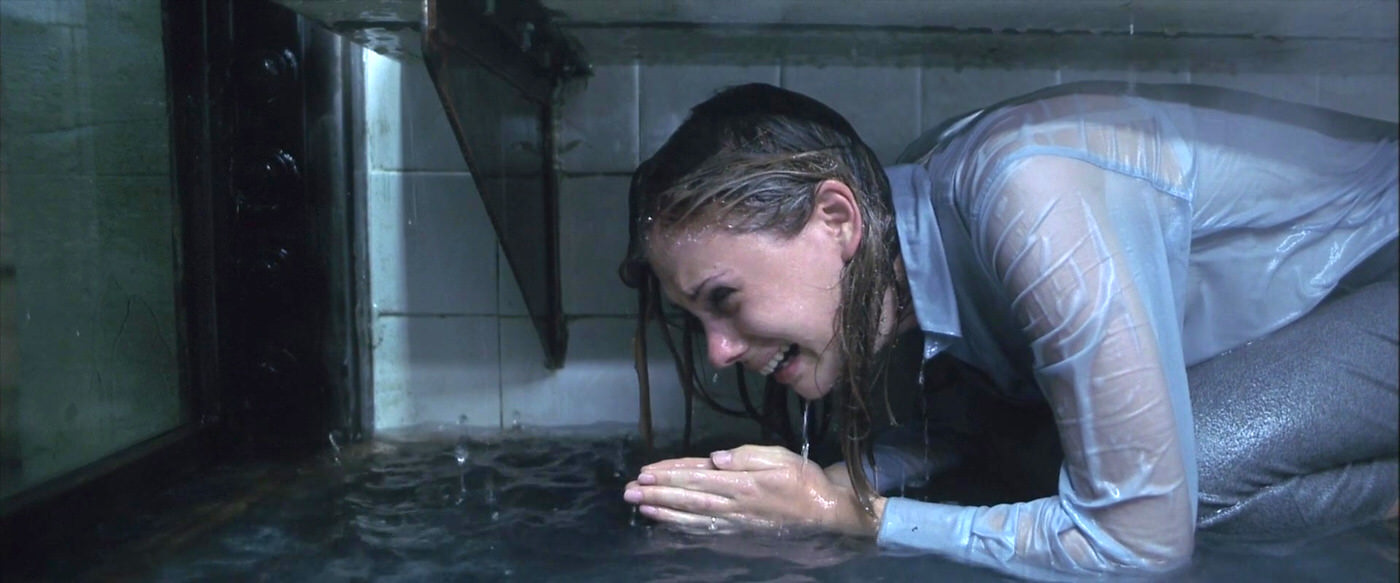
"The Cell" (2000), directed by Tarsem Singh, is a psychological horror film known for its visually stunning and surreal aesthetic. The film's visuals are a blend of vibrant colors, intricate costumes, and mesmerizing set designs, creating a dreamlike and phantasmagorical atmosphere.
The story follows Catherine Deane, a psychologist who enters the mind of a comatose serial killer to uncover the location of his latest victim. The film's visuals mirror the subconscious landscapes of the human mind, featuring elaborate and fantastical environments that shift and morph. Each scene feels like a living painting, with striking compositions and bold use of colors.
Tarsem Singh's background in music videos and commercial directing is evident in the film's highly stylized visuals. From the ornate costumes and symbolic imagery to the elaborate visual effects, "The Cell" presents a visual feast for the eyes, with each frame meticulously crafted.
#30 Black Swan (2010)
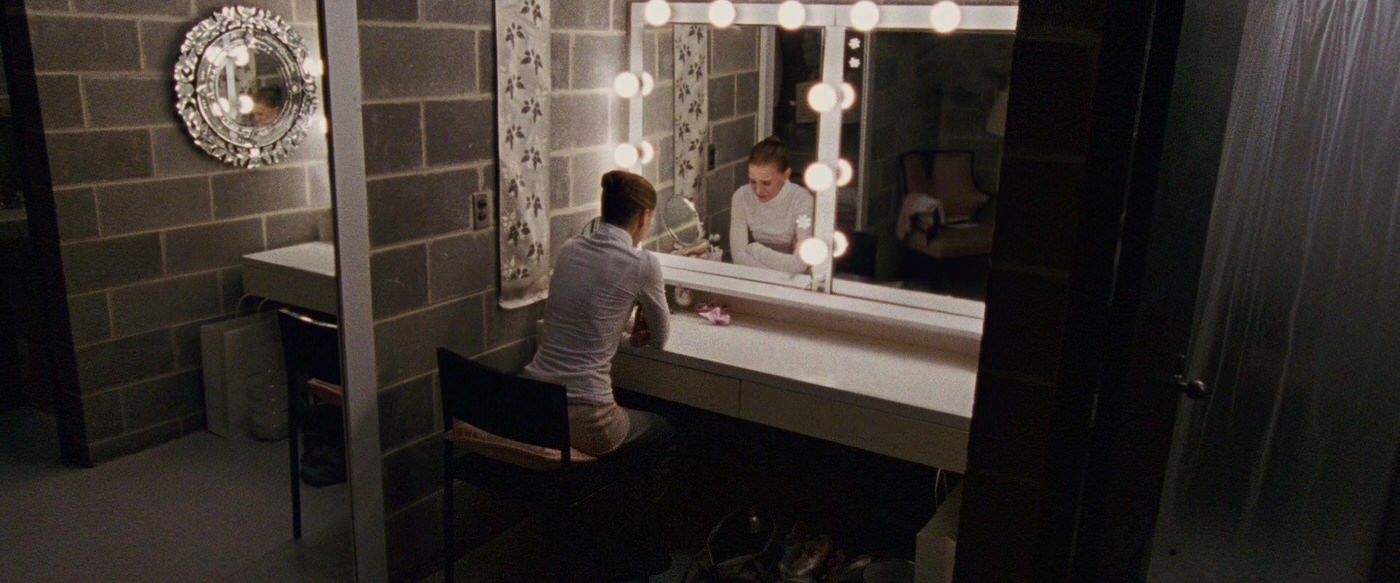
"Black Swan" (2010), directed by Darren Aronofsky, is a psychological thriller with a visually stunning aesthetic that delves into the dark and obsessive world of professional ballet. The film's visuals are marked by a combination of graceful and haunting imagery, employing a contrast of light and dark, and a meticulous attention to detail.
The story follows Nina, a talented but fragile ballet dancer who struggles with her pursuit of perfection in the demanding world of dance. The film's visual style mirrors Nina's internal struggle, with its use of mirrors, reflections, and doppelgängers to convey her fractured psyche.
Aronofsky's use of color is particularly notable in "Black Swan." The film starts with a predominantly white color palette, representing purity and innocence, which gradually gives way to darker and more intense hues as Nina's descent into madness unfolds. The film's climactic ballet sequences are visually striking, combining surreal and hallucinatory elements with powerful performances and dynamic camera movements.



